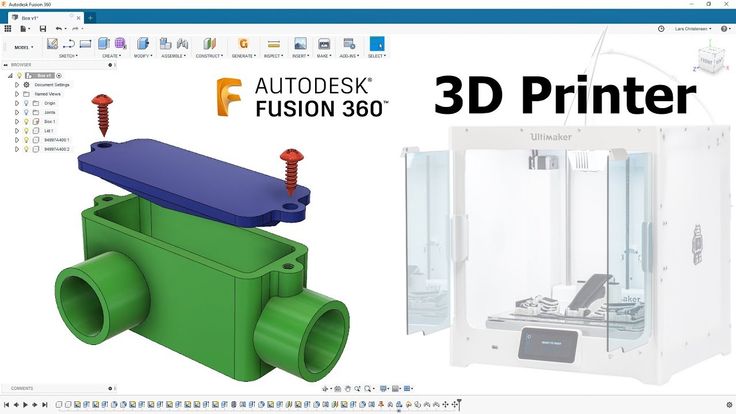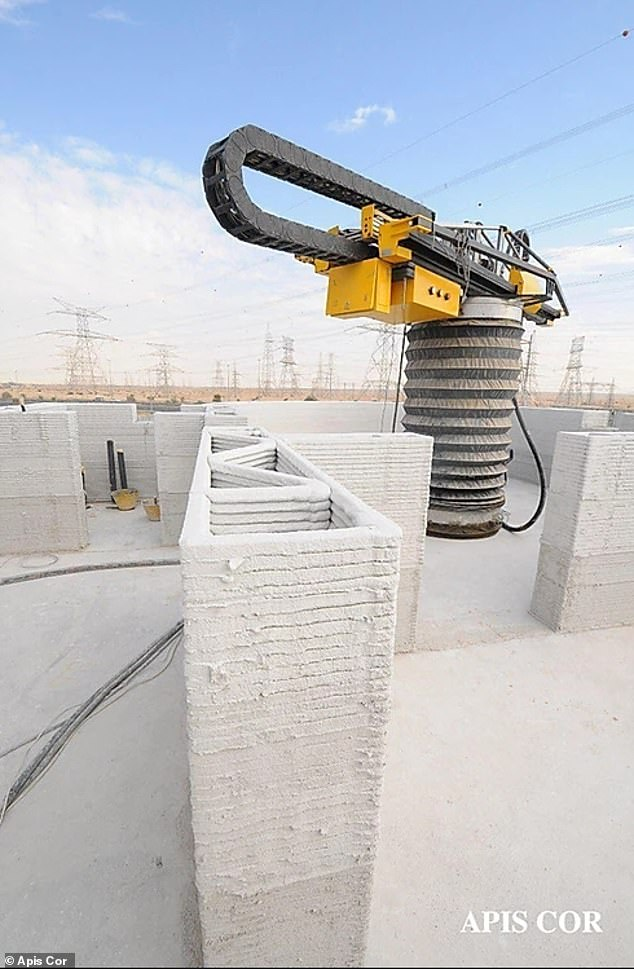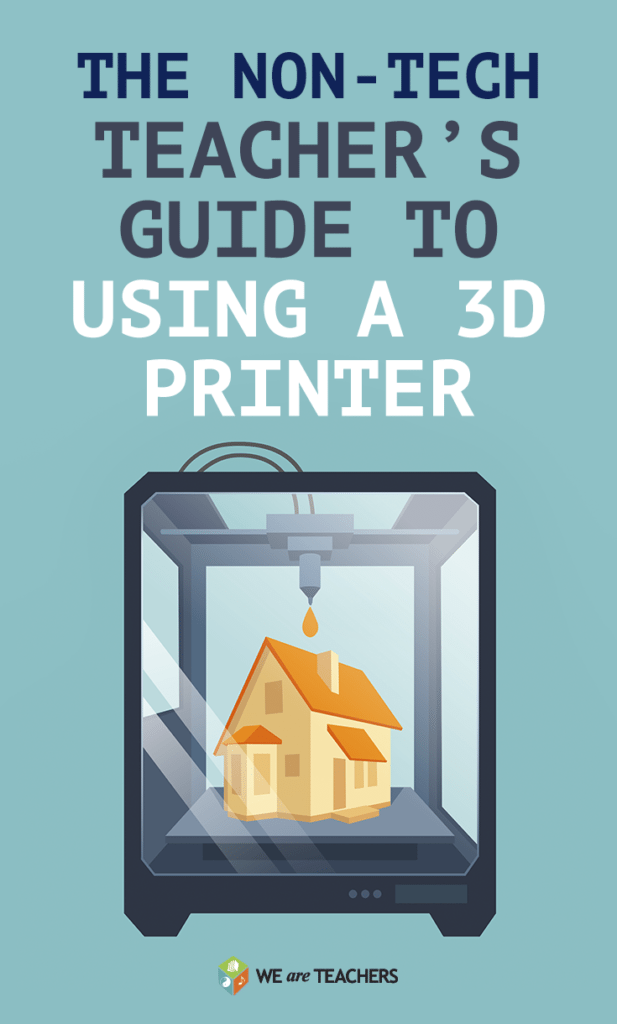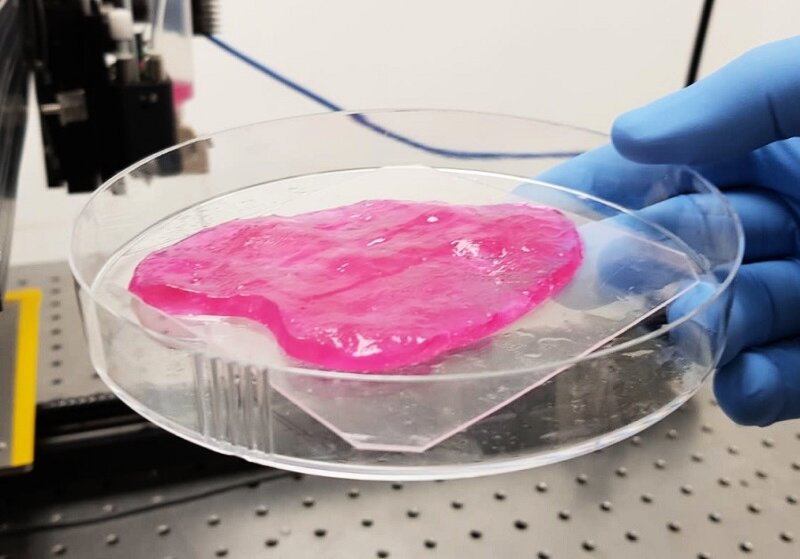Cheapest multi color 3d printer
9 Best Multicolor 3D Printers In 2022
- Last Updated: December 8, 2022
- Pat Nathaniel
Looking for the very best Multi-Color 3D Printer on the market for 2022?
Then you’re in the right place.
Today we’re going to be:
- Looking at multicolor 3D printing;
- Seeing how viable it is for interested creators;
- Finding out which color 3D printer is the best choice for home users;
- Loads more…
Though 3D printing is still in its infancy – and I believe there’s still plenty of wild and wonderful things to look forward to in the coming years – we’ve already made so much progress in the last decade.
One area of continuous innovation is the ability to print in multiple different colors.
As with most 3D printing innovations, multi-color printing was first seen on industrial machines but has been making its way over to desktop 3D printers lately.
Let’s get started!
Geeetech A20M
Build Volume: 255 x 255 x 255 mm
Check Latest Price
Tenlog TL-D3 Pro
Build Volume: 300 x 300 x 350 mm
Check Latest Price
LOTMAXX Shark V3
Build Volume: 235 x 235 x 265 mm
Check Latest Price
Table of Contents
- Top 9 Multicolor 3D Printers At a Glance
- 1. Geeetech A20M (Best Value)
- 2. LOTMAXX Shark V3 (Premium Choice)
- 3. Tenlog TL-D3 Pro (Best Choice)
- 4. XYZPrinting Da Vinci Color (Best Full Color 3D Printing for its Price)
- 5. FlashForge Creator Pro (Most Reliable)
- 6. XRize Rize (A Look-See at an Industrial Full Color 3D Printer)
- 7. Qidi Tech iFast
- 8. FlashForge Creator Pro 2
- Add-Ons
- 9. Mosaic Palette 3 Pro (Best Color 3D Printing Add-On)
- Multicolor VS Full Color 3D Printers
- Can 3D Printers Do Multiple Colors?
- What is a Multi-Color 3D Printer?
- Advantages and Disadvantages of Multi-Color 3D Printer
- How Do You Print Two Colors?
- Can You Paint 3D Printed Objects?
- A Few Final Thoughts…
- Winner: Lotmaxx Shark V3
Top 9 Multicolor 3D Printers At a Glance
1.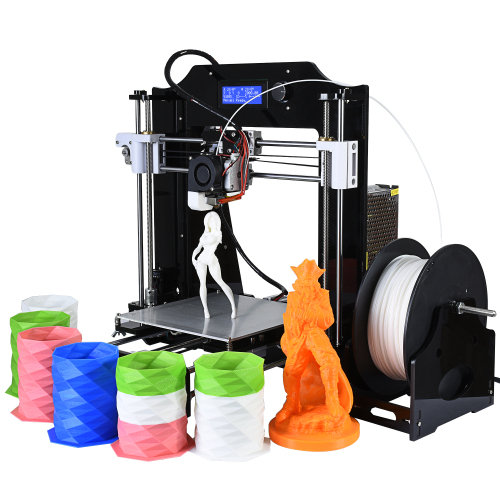 Geeetech A20M (Best Value)
Geeetech A20M (Best Value)
2. LOTMAXX Shark V3 (Premium Choice)
3. Tenlog TL-D3 Pro (Best Choice)
4. XYZPrinting Da Vinci Color (Best Full Color 3D Printing for its Price)
5. FlashForge Creator Pro (Most Reliable)
6. XRize Rize (Best Industrial)
7. Qidi Tech iFast
8. FlashForge Creator Pro 2
9. Mosaic Palette 3 Pro (Best Add-On)
1. Geeetech A20M (Best Value)
3D Printer Type: FDM | Materials: ABS, PLA & PETG | Build Volume: 255 x 255 x 255 mm | Print Speed: 180 mm/s | Color Mixing (Y/N): Y | Extruder: Dual
Geeetech has a couple of different 3D printers on the market, and I found the A20M to be its best option for multi-color 3D printing.
Given that the field is still highly experimental, the A20M doesn’t cost much, which is an immediate bonus.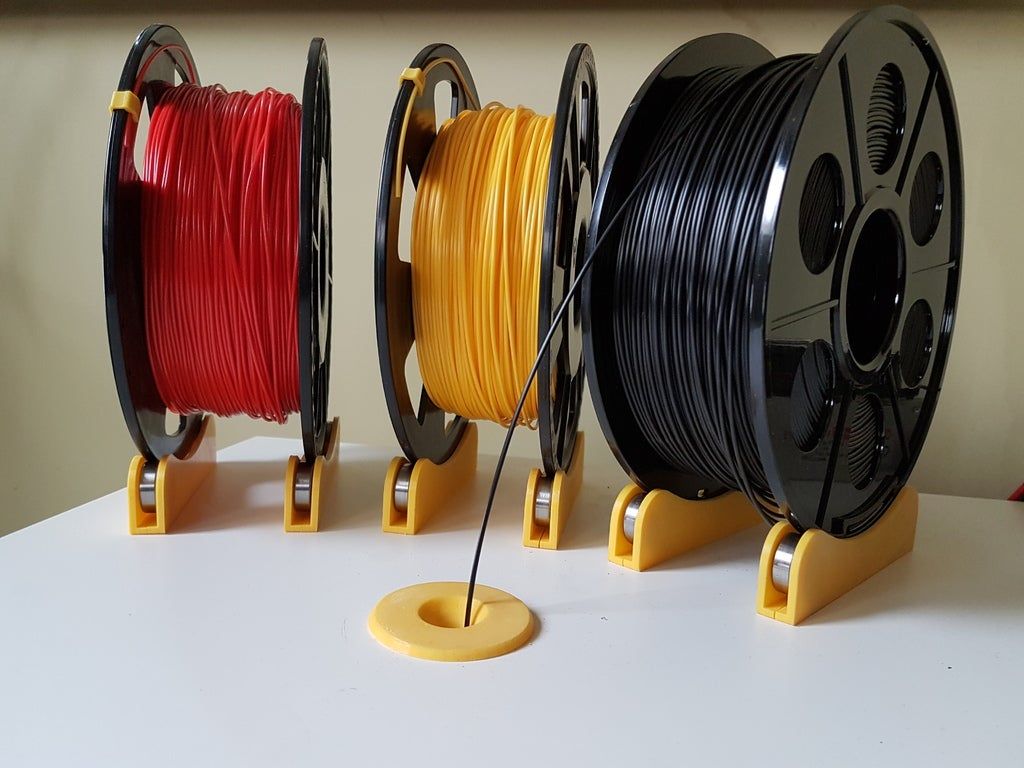
In fact…
… for any reliable dual-extruder, the A20M is still a great price. It’s also blessedly easy to set up, and the dual-extrusion 3D printing technology tends to work well.
But the real reason I loved this 3D printer was its ability to push the envelope on color mixing.
You really don’t see this very much in personal 3D printers, and it’s completely unheard of at this price point.
With the Geeetech, you can expect to print in two distinct colors (striping or the like) or even mix and/ or grade your colors, allowing for a full spectrum of shades and hues.
- Excellent price point
- Great color-mixing technology
- Solid customer service
- Persistent clogging issues
- Poor plate cover
Check Latest Price
2. LOTMAXX Shark V3 (Premium Choice)
3D Printer Type: FDM | Materials: PLA, PLA+, ABS, TPU & Wood | Build Volume: 235 x 235 x 265 mm |Print Speed: 45-90 mm/s | Color Mixing (Y/N): Y | Extruder: Dual
The upgraded version of the LotMaxx Shark V2 brings new features to the table — and they’re good!
It has improved laser engraving capabilities — yielding finely-detailed engravings — and an overall sturdier frame and design with improved cable management.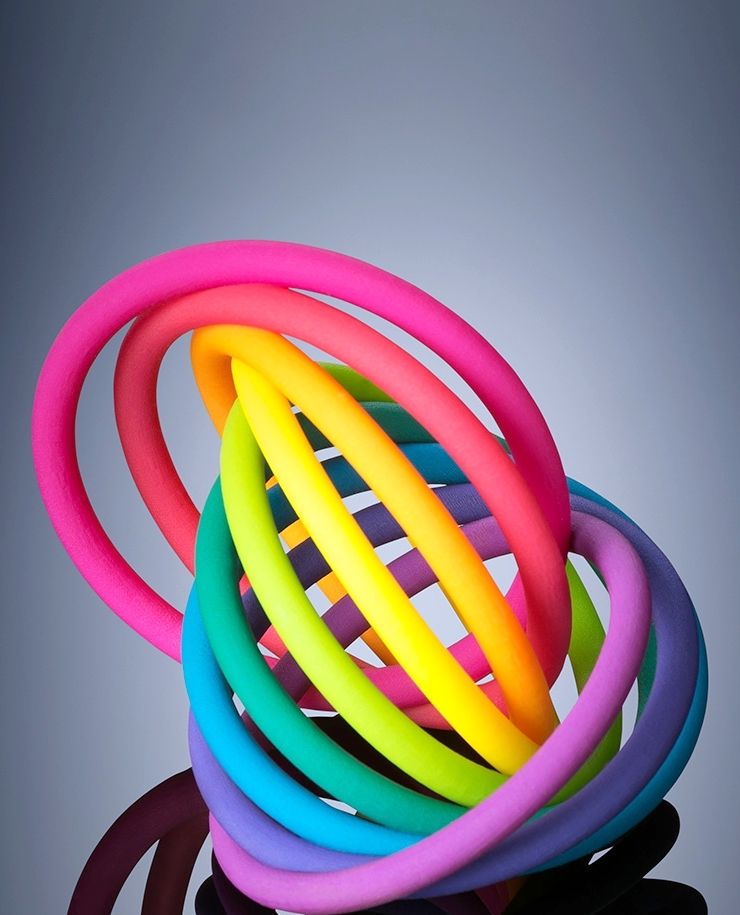 It’s also much quieter than its predecessor, which will save you some hearing damage as a long-suffering 3D printer user. (Oh those stepper motors…)
It’s also much quieter than its predecessor, which will save you some hearing damage as a long-suffering 3D printer user. (Oh those stepper motors…)
The V3 comes with smart G-sensor auto-leveling — the G stands for gravity. This helps you get accurate and super precise leveling that will stay in place for a long time. Nice!
It also has a Resume Print function in case of electricity outages or other interruptions, as well as a filament detection sensor to alert you when the filament has run out.
This printer is compatible with PLA, PLA+, and ABS filaments. For laser engraving, it’s compatible with bamboo, leather, wood, ceramic tile, and craft paper.
It has a build volume of 235 x 235 x 265 mm and is equipped with ultra silent TMC2208 stepper drivers.
This printer comes with dual-color switching extruders and yields beautifully-colored prints. We loved our test prints — they came out very clean and the colors were perfect.
This printer can be used with the default LotMaxx slicer, as well as Cura and Simplify3D.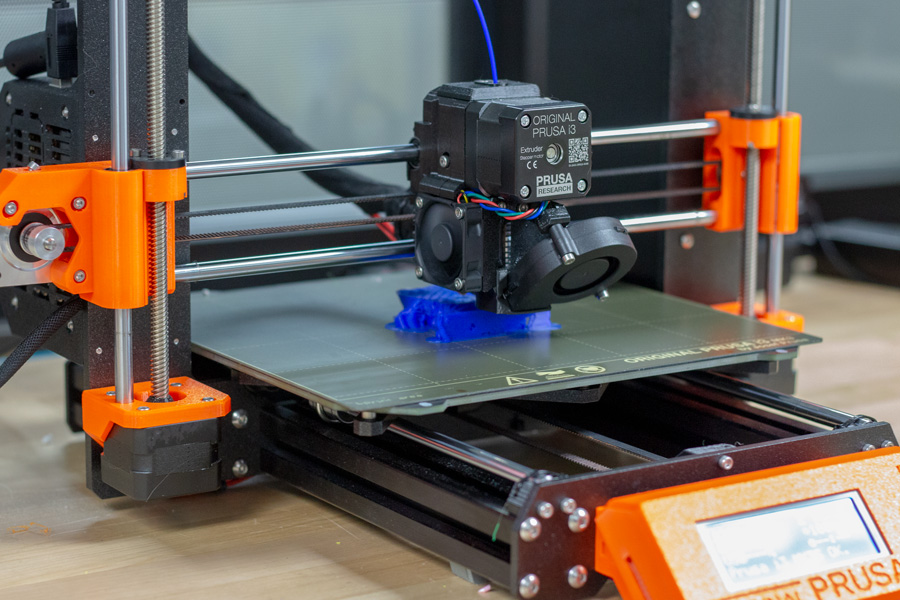 It supports microSD and USB connection
It supports microSD and USB connection
- High-quality dual-color printing and laser engraving
- Silent printing
- Filament detection sensor
- Auto bed leveling
- No Wifi capabilities
Check Latest Price
3. Tenlog TL-D3 Pro (Best Choice)
3D Printer Type: FDM | Materials: TPU, PVA, PLA, ABS, HIPS, WOOD, PETG & Flexible | Build Volume: 300 x 300 x 350 mm | Print Speed: 10-150 mm/s | Color Mixing (Y/N): Y | Extruder: Dual
Unlike the printers before, the Tenlog TL-D3 Pro’s has two extruders and two nozzles.
It means that you can print two identical items simultaneously, in two distinct colors. You can also print in mirror mode and print in two different materials.
It seems like a pretty simple adaptation of the popular (and increasingly affordable) dual-extruder design.
Without delving too far into the enormous potential of this function (try out different colors, double-up on your creation rate, etc.), this is something I expect a lot of other 3D printers to be adopting soon.
But just as easily, these two nozzles can be used on the same product, either filling in a support filament or going for the multi-color approach.
It almost feels unfair constraining this 3D printer to a list like this… all thanks to its Swiss-Army Knife-Like variety of functions and capabilities.
How long does it take to assemble?
The D3 Pro comes half assembled and it took me 30 minutes to put it together with the help of videos online. What I didn’t like was the printer didn’t come with a lot of instructions.
The printer is not dead silent and there’s a low humming noise from the fans.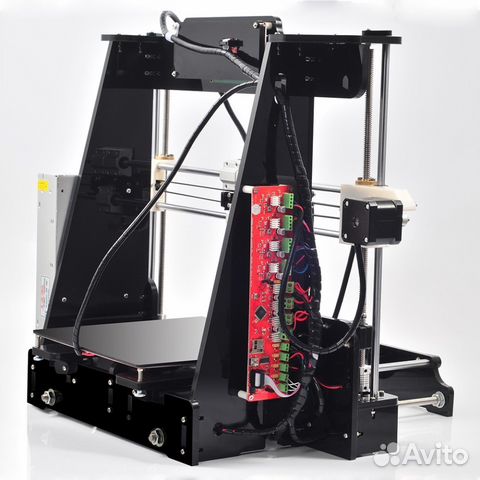 However, it’s noticeably quieter than my Ender 3 Pro.
However, it’s noticeably quieter than my Ender 3 Pro.
The prints so far are very good and I have better results with custom stl files than the test files from Tenlog.
There are cheaper dual color/extruder 3D printers out there but this is the most affordable INDEPENDENT dual extruder (IDEX) 3D printer today.
All in all, this is the best multicolor 3D printer.
- Image-mirroring capabilities
- Easy setup and assembly
- Included warranty
- Runs quietly
- Poor customer service
- Requires filament in both extruders
Check Latest Price
4. XYZPrinting Da Vinci Color (Best Full Color 3D Printing for its Price)
3D Printer Type: FFF | Materials: 3D Color-inkjet PLA , PLA , Tough PLA , PETG, Carbon Fiber & Metallic PLA | Build Volume: 200 x 200 x 150 mm | Print Speed: 180mm/sec | Color Mixing (Y/N): Y | Extruder: Single
This super-popular 3D printer is probably the first one you’ll see when you search for a personal-use full-color 3D printer.
And there’s a good reason for that.
The da Vinci Color is one of the first (if not the first) personal printers to offer full color printing.
While this 3D printer still has its bugs, it can offer a 3D printing design experience that’s miles ahead of almost any other 3D printer on the list.
The Da Vinci’s full color capabilities mean creators have almost total control over every aspect of their design, including the exterior color design.
Gone are the days of painting by hand; with the right schematics, you can print just about any design imaginable.
The 3D printer also comes with hands-free calibration, which can significantly reduce the amount of time you spend fiddling with the da Vinci Color.
And while I didn’t have enough time to experiment with this feature as extensively as I might have liked, it seemed to work very well for the few prints I tested.
To note: this printer comes in the regular size – which I looked at here – and a miniature version that is basically a scaled-down version of the original da Vinci Color.
- Full color 3D printer capabilities
- Hands-free calibration features
- Excellent color palette
- Very pricey
- Some issues with ink cartridge technology
Check Latest Price
5. FlashForge Creator Pro (Most Reliable)
3D Printer Type: FDM | Materials: PLA, ABS, PETG & TPU95A | Build Volume: 227 x 148 x 150 mm | Print Speed: 100 mm/s | Color Mixing (Y/N): Y | Extruder: Dual
Yet another excellent dual extruder 3D printer, the FlashForge Pro, takes the shape of the enclosed-box design, whereas the other dual extruders on the list have all been open-air.
Aesthetically, this has always been my favorite design, though it has its positives and negatives in more objective terms.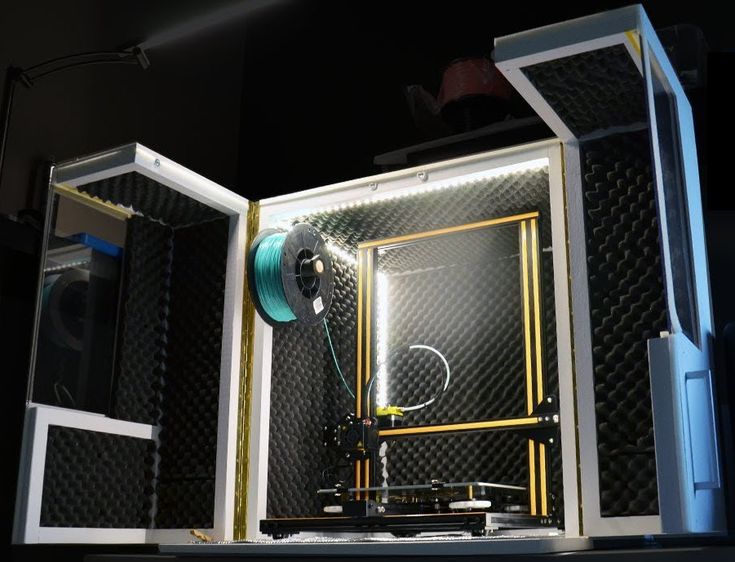
Like the previous 3D printer, the FlashForge Creator is a dual-nozzle design, though it doesn’t have the independent-nozzle functionality (and the image mirroring).
However, it does have a substantial metal frame and faster printing on single objects than the two independent heads.
On top of that, the enclosed design allows for better temperature control, and less potential warping as a result.
However…
… FlashForge went the distance with its design, also allowing for increased ventilation options if you’re printing with PLA.
Finally, the reliability of the Creator Pro’s build plate shouldn’t be overlooked.
By and large, issues with build plates, leveling, and covers have been the most prevalent issue I’ve had with printing.
Having a solid, completely level plate was a wonderful change for me.
- Enclosed environment
- Excellent built plate
- Great filament variety
- Some nozzle clogging
- No automatic bed-leveling
Get Discount (Official Store)
Check Latest Price
6.
 XRize Rize (A Look-See at an Industrial Full Color 3D Printer)
XRize Rize (A Look-See at an Industrial Full Color 3D Printer) 3D Printer Type: FFF with AMD | Materials: Rizium Carbon, GF (Glass Filled), ST (Semi-Translucent), Rizium One White & Black, CMYK Inks & Release Ink | Build Volume: 310 x 200 x 200 mm | Color Mixing (Y/N): Y
This one’s just on the list for fun (unless you’re a large-scale industrial manufacturer, of course).
That said, it’s interesting to look at the difference in the price points of desktop-style multicolor 3D printers and an industrial-grade model full color 3D printer like the Rize.
So how much does the Rize cost?
Well, as you can see from its listing, you’ll need to request a quote to find the exact cost.
However…
… what I can tell you is that based on some of the other sites I looked at while conducting preliminary research, the price should fall somewhere around $55,000 – brand spanking new.
And believe me, that isn’t even close to being the most expensive full color 3D printer on the market.
A full color 3D printer can set you back a dime or two.
So what do you get out of one of these color 3D printers that you’ll miss in one of these other, comparatively affordable versions?
For a start off, this full color 3D printer has a precision and control over their 3D print products that nothing else on my list can come close to.
Like the da Vinci Color (one of our most expensive desktop 3D printers besides the Rize), this printer uses Inkjet toner (the same as a traditional 2D printer) to externally bind colors to the filament as it prints.
However…
… with a full color 3D printer of this price, you can expect much, much better color control than anything you’ll get from the DaVinci.
This color 3D printer can also print logos, QR codes… literally anything you can imagine slapping on the side of a 3D printing; this Rize can make it happen.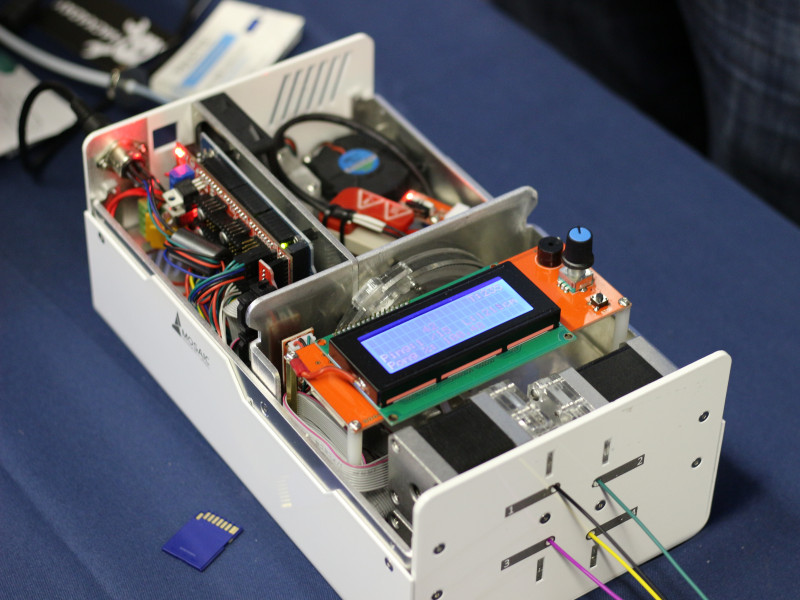
It’s awesome.
This full color 3D printer also comes loaded with all sorts of extra features that make it suitable for industrial production: a heated build chamber, automatic filament swapping and digitally-encoded ink cartridges, to name a few.
More than anything, the XRize is interesting because it provides us with a potential roadmap of what a future desktop 3D printer will be trying to emulate.
After all…
… the evolution of desktop 3D printer technology usually aims to copy the best capabilities of industrial best 3D printers, but on a smaller, less-expensive scale, of course.
Request A Quote
7. Qidi Tech iFast
3D Printer Type: FDM | Materials: PLA, ABS, PETG, TPU, PVA, Carbon Fiber, Nylon & PC | Build Volume: 330 x 250 x 320 mm | Print Speed: 60-120 mm/s | Color Mixing (Y/N): Y | Extruder: Dual
Yet another awesomely robust dual-extrusion 3D printer?!
The Qidi Tech iFast is an industrial and engineering-grade that’s much more affordable than other printers of its caliber.
With a super spacious build volume of 330 x 250 x 320 mm, you can make a whole lot of medium to large-sized objects.
It has in-built air filters providing thorough ventilation, which makes it ideal for indoor use.
This printer can print PLA, ABS, TPU, PETG, Nylon, carbon fiber, and water-soluble PVA for supports.
It also has a double Z-axis for double the precision! Okay, that sounded right out of an infomercial. Anyway. (It’s still true!)
The Qidi Tech iFast comes with a whopping 4 direct extruders! That’s 2 extruders for normal-temperature filaments like PLA and 2 high-temp extruders for nylon and other toasty materials.
This printer also comes with a removable build plate for easy part removal. It has a filament run-out sensor to detect when filament… well… runs out, and it’s also got a camera for remote viewing of your print!
We loved the large touchscreen — it helped us easily navigate controls and get set up quickly.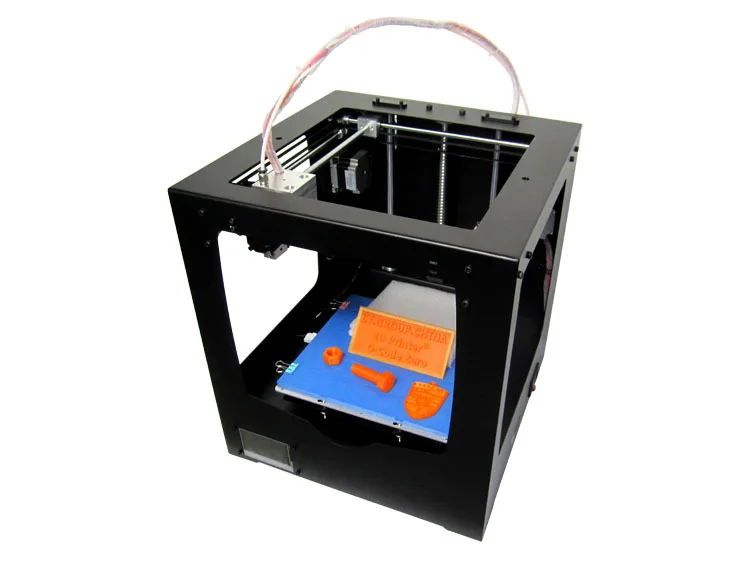 The printer also has WiFi capabilities so you can easily send your print file.
The printer also has WiFi capabilities so you can easily send your print file.
It also comes with a heated enclosure which is perfect for higher temp filaments like ASA, nylon, and PBS.
We found that the stepper drivers were a bit noisy when using this printer. Also, this printer is only compatible with Qidi’s own software, which isn’t as robust as say, Cura or Simplify3D. Also, it doesn’t come with auto bed leveling but with a sturdy printer of this type, it’s not that necessary.
This printer also comes with a 2 year guarantee and round-the-clock tech support. If you’re a pro who wants a mid-range printer with high-end capabilities, go for the Qidi Tech iFast.
- Very robust and professional quality printer
- 4 extruders
- Air filters
- Large build volume
- Noisy printing
- Would be better with standard 3D printing software
Check Latest Price
8.
 FlashForge Creator Pro 2
FlashForge Creator Pro 2 3D Printer Type: FDM | Materials: PLA, Pearl PLA, ABS, ABS Pro, PVA & HIPS | Build Volume: 200 x 148 x 150 mm | Print Speed: 30-100 mm/s | Color Mixing (Y/N): Y | Extruder: Dual
The Pro 2 offers cool new features — namely, a mirror mode where you can print two of the same object at once! Crazy.
It also has an improved dual-extrusion system with only one nozzle. This grants it more flexibility and ease of use than the original Pro design. And it’s got a dandy 3.5″ touchscreen which the Pro doesn’t have!
The Pro, however, has a larger build volume at 227 x 148 x 150 mm and is cheaper than the Pro 2.
The Pro 2 has a slower build speed at 10-100mm/s unlike the Pro’s 30-200mm/s. They both come with 0.4 mm nozzles and have a maximum temperature of 240°C.
If you’re on a budget and/or want a slightly larger printer, go for the Pro. If you want a better dual-color printer, the Pro 2 is definitely it.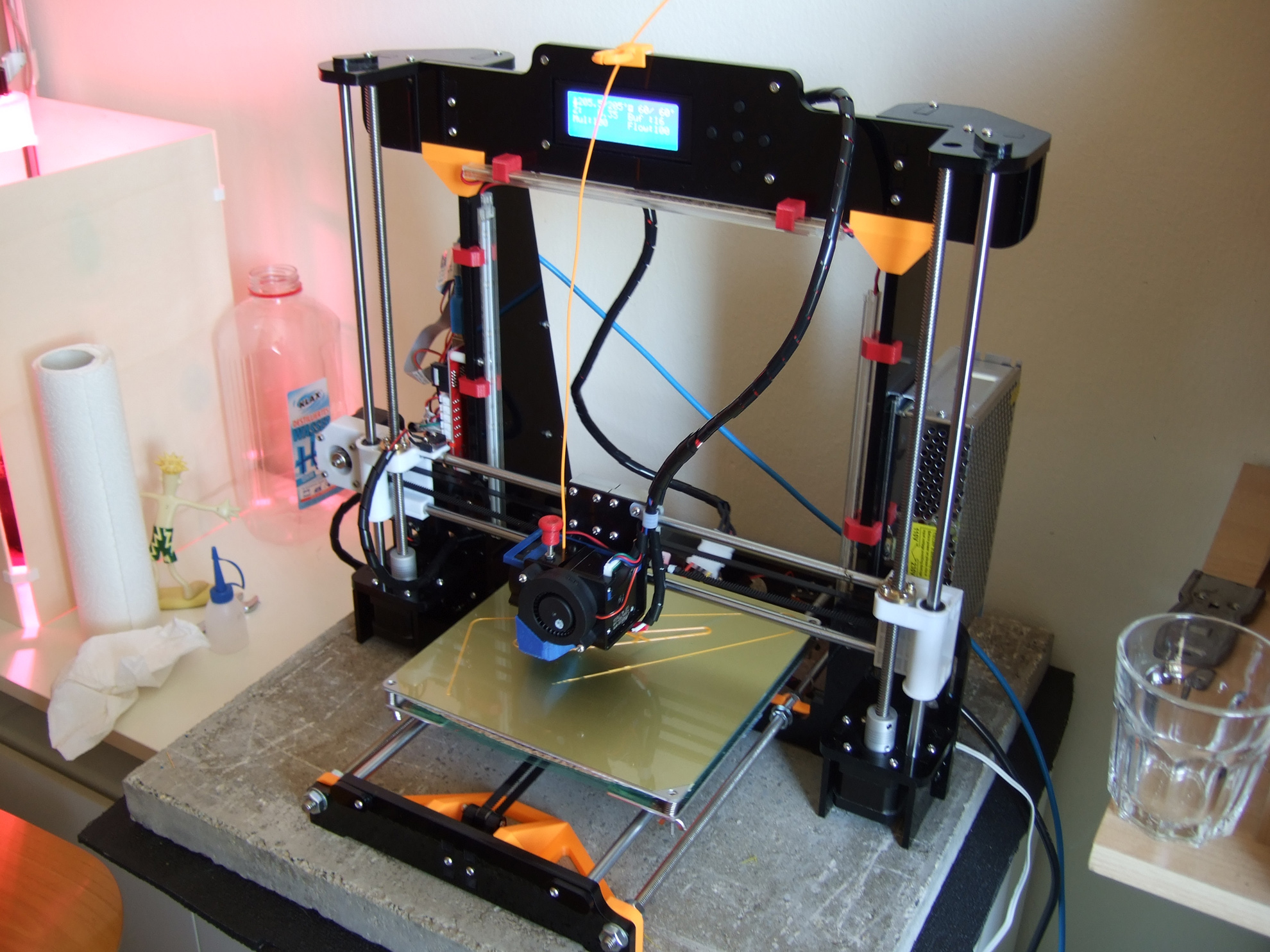
The Pro 2 has a build volume of 200 x 148 x 150 mm and offers 4 printing modes: mirror, duplicate, dual filament and dual color.
And with a 1 year warranty and lifetime technical assistance, the FlashForge team really have got your back!
- Improved dual-color printing
- 4 printing modes
- Amazing customer service
- Smaller build volume and more expensive than predecessor
Get Discount (Official Store)
Check Latest Price
Add-Ons
While there are plenty of color 3D printers that can handle multi-color print jobs within their basic design, others need some help.
Nowadays, one of the best ways of getting excellent and low-cost multi-color creations is using a multi-color add-on for color 3D printers. These tend to cost less than getting a new printer altogether and are compatible with plenty of models (though you should always research the cross-compatibility before you order one).
9. Mosaic Palette 3 Pro (Best Color 3D Printing Add-On)
3D Printer Compatibility: Accepts Non-Proprietary Filament Which is 1.75 mm in Diameter & Recognizes Files Sliced in Slic3r/PrusaSlicer or CANVAS, and Has Open Access to Filament Feed | Materials: PLA, ABS, PETG, TPU, PVA & HIPS | Extruder: On
Want to make a glorious color explosion with your 3D printer? Or have you been dreaming of multi-color capabilities but don’t want to get another 3D printer?
Introducing the Mosaic Palette 3 Pro!
This awesome doo-dad isn’t a printer in itself but rather a device that you hook up to your existing printer to give it multi-color capabilities. With the Mosaic Palette 3 Pro, you can print up to 8 different colors and materials at once — kind of like a multi-colored filament octopus.
With the Palette 3, you can print breakaway or soluble supports using different materials, allowing you to easily tackle difficult overhangs.
To get started printing, place spools on the filament stand and feed them individually into the material inputs on the device.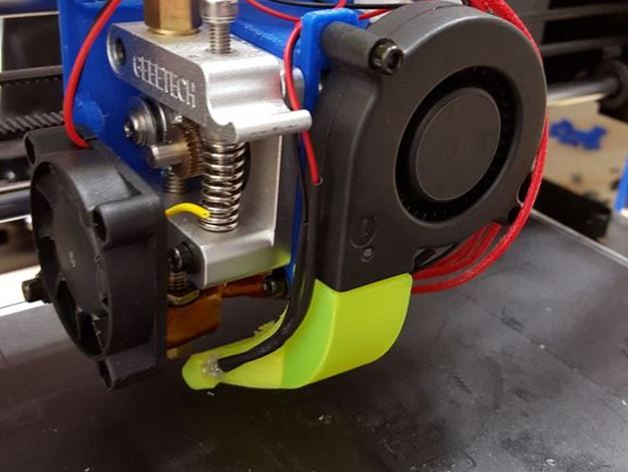 It kinda sounds like something out of Star Trek, but it’s simple enough when you get the hang of it!
It kinda sounds like something out of Star Trek, but it’s simple enough when you get the hang of it!
What the Palette 3 Pro then does is it heats and splices filaments together into a single multi-filament strand.
It comes with Canvas Hub software for remote monitoring of your print. So even when you’re not nearby, you can see how things are going!
The Palette 3 also has a high-resolution touchscreen where you can execute commands and change settings. Nice!
This device has three color printing modes: Gradient Mode (for an awesome gradient/ombré effect), Pattern Mode which enables you to print patterns, and our personal favorite, Random Mode! Which is a bit like throwing paint at the wall blindfolded. (Our favorite pastime outside of 3D printers.)
- Can print up to 8 different colors and materials
- Versatile color and material printing for creative designs and supports
- Remote monitoring
- Expensive
Check MatterHackers
Check Latest Price
Multicolor VS Full Color 3D Printers
Source: Youtube XYZprintingI want to start with a pretty important distinction when talking about 3D printers that can print in multiple colors.
Sometimes “full color” is a term used to describe these printers.
And while this is technically true, “full color” more often describes industrial-grade printers that are able to produce intricate color scaling and manipulation (I included one of these on the list – the XRize Rize – for comparison’s sake).
On the other hand…
… we’re going to be mostly looking at multicolor 3D printers, which can usually handle only a small number of different colors, but which tend to fall under the “personal 3D printer” umbrella.
They’re smaller and much, much less expensive.
All that said, multicolor printing is still a very experimental field – much less established than its industrial counterparts.
Given the scarcity of personal 3D printers that can handle multiple colors, I’m going to be looking at every option on the market today, including dual-extruder printers where each extruder can print a separate color and multi-color printer upgrades.
So let’s take a look at the best multicolor 3D printers!
Can 3D Printers Do Multiple Colors?
Source: Youtube 3D Printing Nerd3D printers can do multiple colors! However, the method varies between printers. Single-extruder printers rely on a method of manually switching out spools of filament, while multi-color printers do this process for you.
What is a Multi-Color 3D Printer?
A multi-color 3D printer is a device that 3D prints different filaments using multiple extruders and nozzles.
Advantages and Disadvantages of Multi-Color 3D Printer
The obvious advantages of a multi-color 3D printer: you get awesome multi-colored prints without having to manually swap filaments. Also, such printers are compatible with water-soluble filaments for easy support removal.
The disadvantages: twice the extruders, twice the maintenance. Hot end assemblies can run into any number of issues — and dealing with two of them can be a hassle. Also, it’s much more expensive than a single-extruder printer.
Also, it’s much more expensive than a single-extruder printer.
How Do You Print Two Colors?
If you have a single-extruder printer, you can pause and swap.
What does this mean?
Well, whenever you want to change colors in a print, you just stop the print and swap the filament. This can be a major chore, however, and with multi-color printers the process is much easier.
First, you load your two spools onto the spool holder, and then you feed the filament into the printer. Then you just let it do its multi-colored magic!
Can You Paint 3D Printed Objects?
Yes, you definitely can!
Acrylic and enamel paints are best for 3D printed surfaces. However, you’ll have to sand your 3D printed part first. This gets rid of visible layer lines and helps the paint stick better to the surface.
A Few Final Thoughts…
So there you have it – a fairly comprehensive guide to multi-color 3D printing, the best (affordable) multicolor 3D printers out there, one crazy-expensive one, and an alternative option altogether!
When it comes to choosing your best color 3D printer, there are plenty of factors to keep in mind.
When making your decision, you should always consider what specific projects you have in mind and tailor your choice to fit. After all, if you’re looking to upgrade towards multicolor 3D printing, you probably have a couple of exciting ideas in the bag already.
Some of these 3D printers excel at color combining.
For color control, the Da Vinci provides an entirely different system from anything else on the list (besides the XRize) but does so at a higher price point and with a few concerning bugs.
Some color 3D printers come packed with excellent side features, like the Lotmaax Shark V3.
And others have an ingenious design that comes with other exciting applications, like the dual-nozzle design of the TenLog.
Anyway, your preferences will determine your best color 3D printer, so I’ll hand over the baton to you to make your choice.
You’ll be churning out those colorful 3D prints before you know it.
Our pick
LOTMAXX Shark V3
Great 3D printer for beginners
This printer cranked out quality prints right out of the box in our test. Comes with excellent, all-metal nozzle and extruder and many more features makes this the best value.
Comes with excellent, all-metal nozzle and extruder and many more features makes this the best value.
Check Price from Amazon
Source: Youtube Dylan HongSo this was kind of an underdog story for me. When I first started looking for the best color 3D printer, the Lotmaxx wasn’t even on my radar.
Yet the more I learned about this 3D printer, the more I was impressed – both by its original design and by its execution. Not to mention that it’s a Kickstarter success and really demonstrates the best aspects of grassroots ingenuity coming out of the color 3D printing field.
Not only is the Lotmaxx an excellent base 3D printer capable of color 3D printing, but it also comes with some innovative features that I haven’t seen in a single other color 3D printer.
The laser engraving upgrade opens up new doors in creative design. The auto bed-leveling works pretty well, and the handheld removable touch-screen is something I haven’t seen in any other 3D printers, no matter what price point.
And to speak on the price… all of this costs less than $500.
Typically, when I review 3D printers by newly-launched companies or Kickstarter campaigns, I’m overwhelmed by a sea of mechanical, software, and assembly issues. I had none of these with the Lotmaxx.
In fact, the only persistent issue I had with this color 3D printer came from the build plate adhesion.
In some cases, my recent prints would require a lot of elbow grease and some light chiseling to remove the prints from the plate. This is one of the most straightforward issues to remedy, though, so it’s not even something worth criticizing.
So there you have it!
Whether you choose the Shark or some other color 3D printer on the list (XRize, anyone?), multicolor 3D printing opens up many new avenues for you and your creations.
In a field where companies and creators are innovating every day, I can’t wait to see what new color 3D printer awaits us! Until then, thanks for reading, and happy printing!
Multi-Color & Full-Color 3D Printers: The Complete Buyer's Guide 2022
Just a decade ago, the thought of a color 3D printer in every home would have sounded like delusional madness. Even single-color 3D printing on basic 3D printing machines cost thousands of dollars unless you built an early RepRap 3D printer.
Even single-color 3D printing on basic 3D printing machines cost thousands of dollars unless you built an early RepRap 3D printer.
Now in 2022, you can turn any cheap 3D printer into a multi-color 3D printer and create stunning color prints for just a few hundred dollars. Some color 3D printers come with this ability, and the rest can be adapted using special color 3D printer adaptors. You can even buy a full-color 3D printer, offering complete CMYK color ranges of over 50,000 colors, that fit on the side of your desk.
The Best Color 3D Printers
| Name and brand | Type of color 3D printer | Price | Best place to purchase |
|---|---|---|---|
| Geeetech A20M | Mix color 3D printer | $399 | Amazon here |
| Geeetech A20T | Mix color 3D printer | $449 | Amazon here |
| Crane Quad | Full Color 3D printer | $899 | |
| XYZprinting Da Vinci Color | Full color 3D printer | $2,995 | Amazon here |
| Palette 2S | Color 3D printer adaptor | $599 / $799 | Matterhackers here |
| Prusa Multi Material Upgrade | Color 3D printer adaptor | $300 | Prusa Store |
| 3DChameleon Upgrade Kit | Color 3D printer adaptor | $99 / $199 |
3DSourced is reader-supported.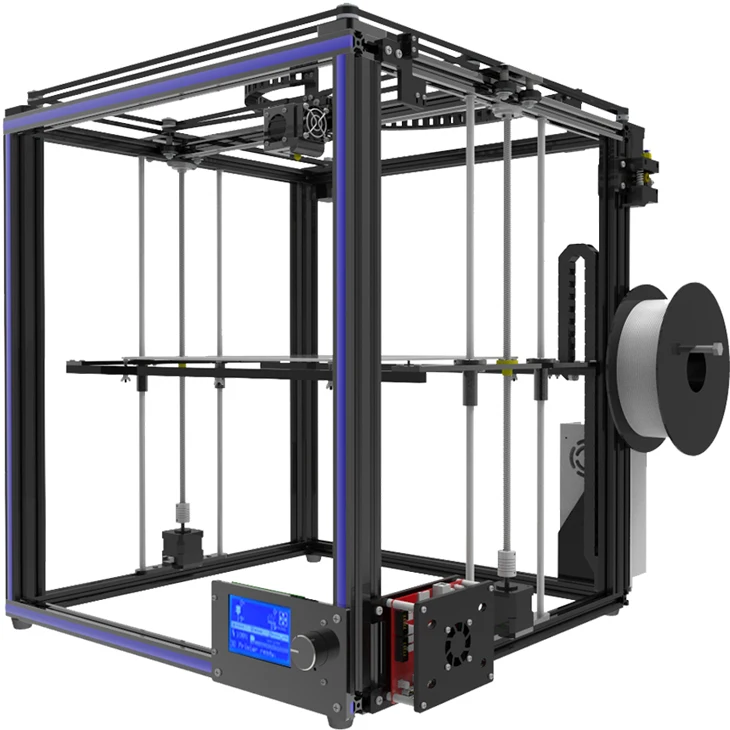 When you buy through links on our site, we may earn an affiliate commission. Learn more
When you buy through links on our site, we may earn an affiliate commission. Learn more
What is a color 3D printer: differences between a multi color 3D printer and full color 3D printer
When we say multi color 3D printer, we do not mean that the 3D printer can print the whole spectrum of colors, but several different fixed colors in one model. Colored filaments are printed in certain places in the model, creating parts made from a restricted number of block colors, but these colors are bold and stand out.
A full-color 3D printer on the other hand offers a complete range of colors, mixing CMYK or RGB colors so that even slight changes in color or texture are reflected in your 3D printed model. Far more color customization is available, though colors can be less bold and look more washed out.
The majority of the color 3D printers featured in this buyer’s guide are multi-color 3D printers that are able to print 2, 3, 4, or even 5 different colored filaments in one model.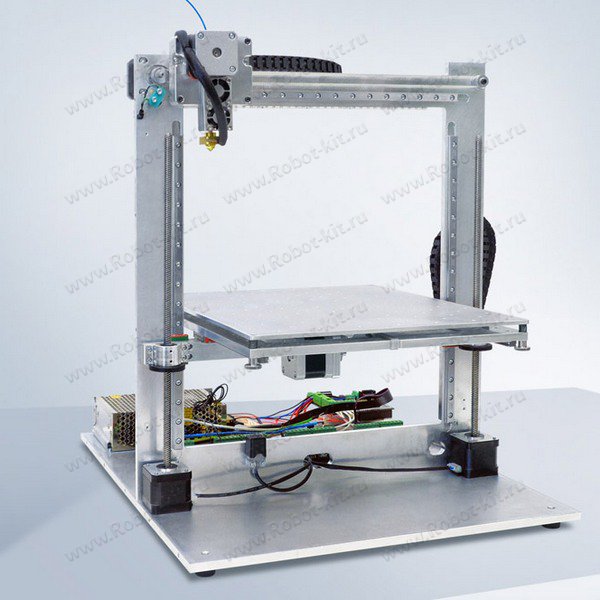
We have split this article into different sections based on what you’re looking for. You can get right to that section by clicking each part below:
Mix color 3D printers
Standard dual extruder printers
Filament splicers
Full-color 3D printers
Non-FDM, industrial technologies for full-colorThe artistic and memeable applications of the best color 3D printers.
The main ways to 3D print in color
For a quick introduction, these are the main ways to 3D print in color:
- Stopping and starting, changing filament: A labor-intensive and frustrating method, this involves pausing your print and changing out one color filament for another, and then resuming the print. 3D slicer settings can be set to automatically pause at the point you want to switch filament. Multi color 3D printers effectively automate this for you, and with multiple colors.
- Using a dual extruder: Dual extruder 3D printers offer printing in two colors, or two different materials.
 For those satisfied with creating models printed in two different colors, you can simply load two different colors of your chosen filament, such as black and red, and print your model mixing these colors.
For those satisfied with creating models printed in two different colors, you can simply load two different colors of your chosen filament, such as black and red, and print your model mixing these colors. - Mix color systems: Used on Geeetech printers we recommend below, these systems can mix multiple filaments within your print to create prints with changing color gradients and patterns.
- Color 3D printer adaptors: We include a whole other section for these below. These adaptors splice multiple different filaments together based on which areas are to be printed in each color. You can turn single extruder 3D printers into color 3D printers using these adaptors. Popular filament splicers include the Palette range by Mosaic Manufacturing.
- Full color 3D printers: These use 2D inkjet printer inks to dye filament as it is printed, rather than feeding and extruding multiple different colors of filament at the same time. The XYZprinting Da Vinci Color we discuss below utilizes this method.
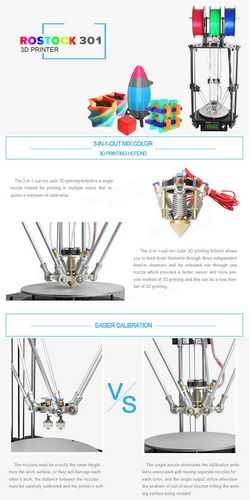
Multi Color 3D Printers
Before we get to full-color 3D printers, let’s first talk multi. Multi-color 3D printers themselves aren’t one category, but include mix color 3D printers, dual extruder 3D printers, and filament splicers that you can buy as add-ons to turn your printer into a multi-color beast.
We’ll go through each type below:
Mix Color 3D printers
Mix color 3D printers differ from dual extruder printers as rather than using two (or more) extruders and nozzles, they blend two different filaments into one nozzle, mixing the different colors together as they print.
This is cheaper than buying a multi-extruder printer, and the mix color 3D printers we recommend below are generally cheaper than dual extruder printers. However, you lose out on the main benefits of a dual extruder, such as duplication modes, and more efficient 3D printing.
Geeetech A20M Mix Color 3D Printer
- Price: $399 — Available on Amazon here
- Build Volume: 255 x 255 x 255 mm
- Color range: multi color 3D printers (2 colors, with mix color options)
Geeetech is a large open source 3D printer company that has sold over 100,000 3D printers worldwide.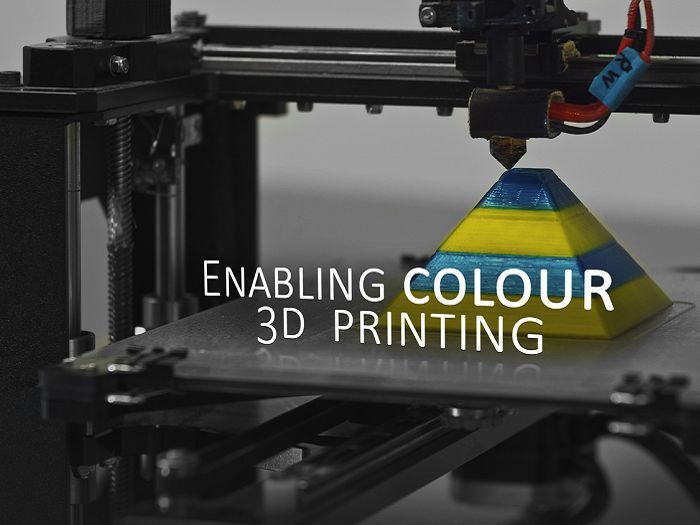 Their interesting forays into multi-color 3D printers include firstly the A20M, featuring a dual extruder with a 2 in, 1 out hot end.
Their interesting forays into multi-color 3D printers include firstly the A20M, featuring a dual extruder with a 2 in, 1 out hot end.
This 2 in, 1 out hot end offers four different color 3D printing options: single color 3D printing, dual color 3D printing, graded color 3D printing, and mix color 3D printing. For example, for some projects you may want to print small details in a different color, whereas for some models you may want the colors to mix every few layers, or have the bottom half one color and top half another. The Geeetech A20M gives you all that flexibility.A mix color gradient print done on a Geeetech A20M. Credit: remcoder on Reddit.
It’s a 3D printer kit that you’ll have to assemble yourself, but does not take much DIY skill. The building process involves just 3 fairly simple steps, and the structure design is based on the Prusa for stability and quality. The Geeetech A20M is accurate, with up to 0.1mm accuracy, and also versatile in the 3D printer filaments it can use, with the ability to print not just ABS or PLA, but also wood-filled filaments, PVA, HIPS, PETG and more.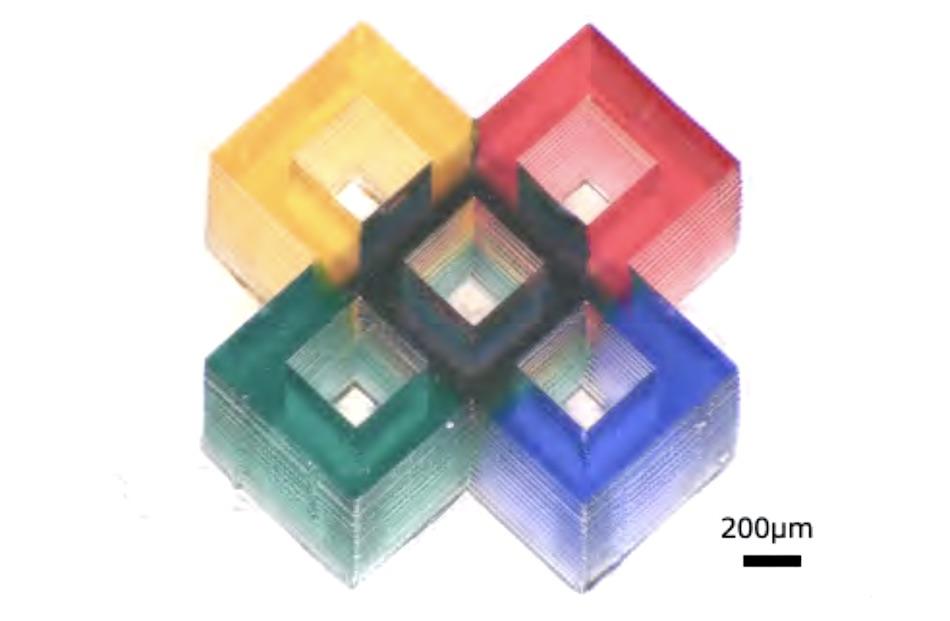
To mix colors, simply use Geeetech’s ColorMixer software, and choose your color 3D printer settings, such as graded color between certain layers. The A20M is compatible with 3D slicers like Cura and Simplify3D, and you can print remotely using the printer’s WiFi connectivity. Overall, it’s a great cheap 3D printer offering a way into color 3D printing without breaking the bank.The Geeetech A20M uses its mix color 3D printing technology to create multi colored prints, shown above.
Geeetech A20T
- Price: $425 — Available on Amazon here
- Build volume: 250 x 250 x 250 mm
- Color range: multi color 3D printer (3 colors, with mix color options)
If you though the A20M was neat, the A20T takes that even further. Instead of being able to mix 2 colors, the A20T can mix 3, with the 3-in-1 mixing capability able to combine 3 different filament colors to create multi-colored 3D prints that look amazing.
Combining two colors can already create stunning color 3D prints, but adding a third exponentially increases design possibilities.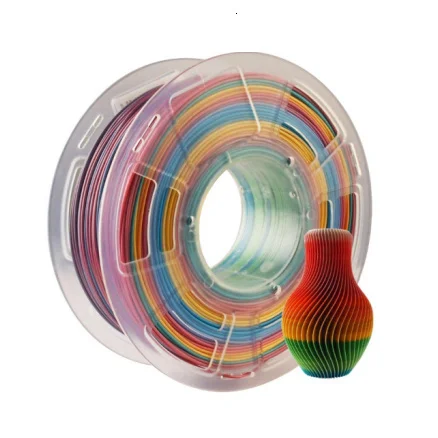 Geeetech show examples of radiant multi color 3D prints with alternating colors on the bottom half, with a third block color on the top half, creating fantastic multi-colored models for under $500.
Geeetech show examples of radiant multi color 3D prints with alternating colors on the bottom half, with a third block color on the top half, creating fantastic multi-colored models for under $500.
Again, it is based on a Prusa-inspired design, and is easy to assemble from kit form in 3 simple steps (lots of threes here!). You can use Geeetech’s EasyPrint 3D app for remote color 3D printing and monitoring, as well as giving you access to over 50,000 free 3D models to print. You can use Repetier-Host, or use Cura, as well as EasyPrint 3D.
It is ever so slightly smaller than the A20M (by 5mm on each axis) and prints with an accuracy of 0.1-0.2mm. Overall, we think the Geeetech A20T is a great multi color 3D printer to create great FDM prints with mixes of three colors in one.
Crane Quad
- Price: $899
- Build volume: 230 x 230 x 250 mm
- Color range: multi color 3D printer / full color 3D printer depending on settings
The Crane Quad is a color 3D printer made by M3D, who previously released the successful Micro 3D printer after raising an astonishing $3.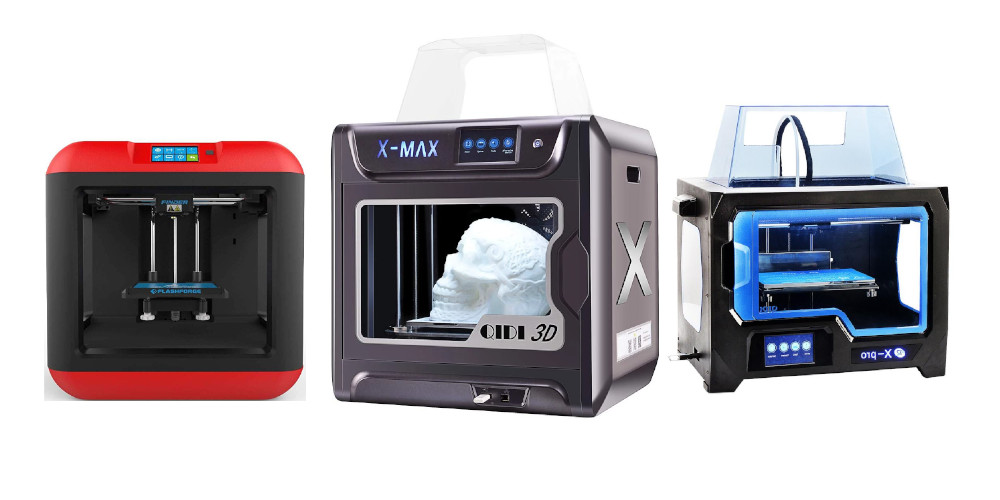 4 million on Kickstarter. The Crane Quad takes up to four filaments at once, which you can print individually and switch if you want to change color, or if you use M3D’s CMYK filaments, can combine them all together to create full color 3D prints comprising of over 50,000 different colors.
4 million on Kickstarter. The Crane Quad takes up to four filaments at once, which you can print individually and switch if you want to change color, or if you use M3D’s CMYK filaments, can combine them all together to create full color 3D prints comprising of over 50,000 different colors.
The ability to print accurately (up to a claimed 25 microns) and with such color range makes the Crane Quad a very interesting 3D printing option. The large 3D printer build volume means that large full color 3D prints can be created, and it’s also fairly portable, weighing just 8.5kg. Though far less known than the other color 3D printers mentioned, the Crane Quad is definitely an option worth considering.
Dual extruder printers with two different colored filaments
Similar to mix color 3D printers, dual extruder printers can use either two different colored filaments, or two different materials, simultaneously, due to a second nozzle and extruder. There are standard dual extruder printers, and IDEX printers, with a dual extruder that can move independently for added efficiency.
Rather than mixing filaments together, you can print models with two different colors applied on to the same model. It also means you can print soluble supports (PVA for PLA, or HIPS for ABS) that can be easily dissolved afterwards for stunning models without any of the imperfections you can get during normal post-processing.
Any dual extruder printer can 3D print with multiple colors, but here are some we recommend:
- Flashforge Creator Pro 2 — Available on Amazon here / Flashforge here
- Raise3D E2 — Available at Matterhackers here / Dynamism here
- Ultimaker S3 — Available at Matterhackers here / Dynamism here
- Ultimaker S5 — Available at Matterhackers here / Dynamism here
Filament Splicers for Multi-Color 3D Printing
Multi-color 3D printing is possible if you use a filament splicer, such as the Palette 2S, which we recommend as the number one option for multi color 3D printing.
Prusa also offers a Multi Material Upgrade kit with similar features.
These color 3D printing adaptors take up to 4 separate filaments of different colors, at once. These filaments all feed into the filament splicing machine. Prior to printing, you select which parts of your model are to be which color in Palette’s CANVAS 3D CAD software, and as the filaments are fed into the Palette filament splicer, it splices these filaments into one, multicolored spool based on which colors are to be printed in each exact area of your model.
The results are stunning, multi-color 3D prints that have many real-world uses. Interior design models can be produced at a fraction of the price, and in record time, as well as video game or film characters, 3D printed miniatures for games like Warhammer, and a huge number of other applications.
You are restricted to four different colors, or three colors and a support material, so bear in mind that these parts are not full color. You do however retain the bold colors of your chosen filaments, which in full-color 3D printing can look washed out and less striking.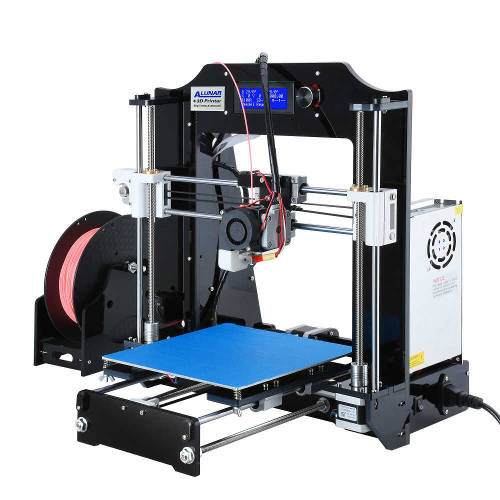
Palette 2S & 2S Pro
- Price: $599 for Palette 2S — Available on Matterhackers here / Available on Amazon here
- $799 for Palette 2S Pro — Available on Matterhackers here / Available on Amazon here
- Color range: multi color 3D printing with up to 4 colors
Mosaic Manufacturing has stormed the industry recently with their revolutionary Palette color 3D printer filament splicers, turning any desktop 3D printer into a multi color 3D printer able to print models in up to 4 different colors or materials.
While not a 3D printer, the Palette 2S and 2S Pro connect to your printer, and splice multiple different filaments into one continuous, multi-colored filament based on the dimensions and chosen colors for that model. It calculates perfectly the amount of each color for each chosen area, splicing the filament together where that filament will be used, creating stunning multi-color 3D prints with ease.Using a multi color 3D printer filament splicer like the Palette can turn single color models into interactive, multi color prints, such as the medical model above.
Name a 3D printer, it’s probably compatible with the Palette 2S. Creality, Flashforge, Dremel, Makerbot Replicator, all Ultimaker 3D printers if you purchase the adaptor for 2.85mm filaments, Makergear, Qidi Tech, Prusa, Lulzbot and many other manufacturer’s 3D printers work with the Palette adaptor.
You can use the Palette 2S to create multi color 3D prints with any single materials, including PLA, ABS, TPU, PETG, PVA and Nylon, or sacrifice one color and use a soluble filament like PVA in addition to your 3 colors for soluble supports that can be dissolved. Effectively, this adaptor turns your printer – even if it previously had just a single extruder – into one with four independent extruders.A beautiful multi color 3D printed cup design printed using the Palette. Credit: DE3DPrintman on Twitter.
Mosaic Manufacturing also sell the Palette 2S Pro, which includes an extended warranty, extra spare parts, and better splicing capabilities. You can also buy an adaptor which allows the Palette to work with Ultimaker 3D printers that use 2. 85mm filament, rather than the standard 1.75mm.
85mm filament, rather than the standard 1.75mm.
Mosaic also offer their specially designed CANVAS 3D modeling software. You can directly color and paint prints in the software before printing, that your printer will then follow to your exact specifications.
Overall, the Palette and its accompanying software open up the possibility for a huge variety of colorful 3D printing, for character models for use in film, video games and other media, as well as high added value industries like architectural models for interior design that previously would have cost far more to print on a PolyJet 3D printer.The exterior and interior of the Palette 2S, showing how the machine splices filament for multi color 3D printing.
Prusa Multi Material Upgrade 2S
- Price: $299 — Available on Prusa store here / Prusa i3 MK3S+ available here
- Color range: multi color 3D printer (up to 5 different colors)
Prusa 3D printers already have a stellar reputation for reliability, engineering excellence and innovation. In line with this, Prusa offers a multi-color 3D printing upgrade for their MK3S machines, allowing you to print up to 5 different colors simultaneously.
In line with this, Prusa offers a multi-color 3D printing upgrade for their MK3S machines, allowing you to print up to 5 different colors simultaneously.
At $300 this kit is cheaper than the Palette, but works only with Prusa printers. You can combine colors with ABS, PLA, PETG and PVA (the same as the Palette but without TPU and Nylon), and you will need to assemble the kit yourself. The kit has been meticulously tested by the Prusa team prior to release, so you can be assured of its quality.
Some colorful models printed using the Multi Material Upgrade 2S by Prusa.An upgrade on the 2S compared to the previous Multi Material Upgrade is that it now features a direct drive extruder feeding system rather than a Bowden. Additionally, a filament buffer is included, which keeps each individual filament separate from others, ensuring they do not become tangled during the loading and printing processes.
Overall, it’s a fantastic multi color 3D printer upgrade kit for the already great Prusa printer line.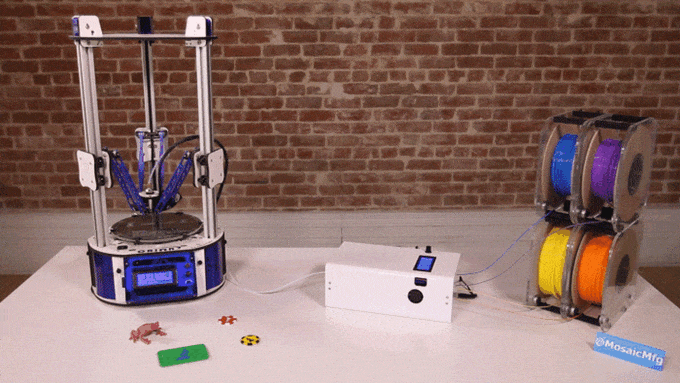 Whereas the Palette shines in its openness and compatibility with so many common 3D printers, the Multi Material Upgrade kit encourages users to buy a Prusa and stay within this ecosystem. Both are great options for multi color 3D printing.The Multi Material Upgrade mounts on top of the Prusa printer, as shown above, to print multi colored 3D parts.
Whereas the Palette shines in its openness and compatibility with so many common 3D printers, the Multi Material Upgrade kit encourages users to buy a Prusa and stay within this ecosystem. Both are great options for multi color 3D printing.The Multi Material Upgrade mounts on top of the Prusa printer, as shown above, to print multi colored 3D parts.
3D Chameleon
- Price: $99 for 2 colors, $199 for 4 colors
- Color range: multi color 3D printer (up to 4 colors)
A lesser known multi color 3D printer adaptor, the 3D Chameleon DIY kit offers multi extrusion with different materials or colors, and is compatible with commonly used printers by brands like Creality and Prusa.
Compatible with Bowden extruder 3D printers, 3D Chameleon offer both 2-color and 4-color options, depending on the variety of color you are looking for in your 3D prints.Some multi colored 3D prints using the 3DChameleon kit. Credit: 3DChameleon on Twitter.
The kit takes less than an hour to assemble, and doesn’t involve any technical or complex electronics. Once set up, it uses your 3D printer’s hardware to automatically remove and reinsert each colored filament when each color is needed based on your model’s specification. You can slice multi extruder models in Prusa Slicer, Slic3r, Cura and a number of other 3D slicers, and at a lower price than the Palette or Prusa adaptors, some will find the 3D Chameleon multi color 3D printer adaptor the best option for them.A Prusa Mini with the 3DChameleon kit installed. Credit: 3DChameleon on Twitter.
Once set up, it uses your 3D printer’s hardware to automatically remove and reinsert each colored filament when each color is needed based on your model’s specification. You can slice multi extruder models in Prusa Slicer, Slic3r, Cura and a number of other 3D slicers, and at a lower price than the Palette or Prusa adaptors, some will find the 3D Chameleon multi color 3D printer adaptor the best option for them.A Prusa Mini with the 3DChameleon kit installed. Credit: 3DChameleon on Twitter.
Full Color 3D Printers
FDM currently offers one method for full color 3D printing. This involves using a colorless filament, with each area dyed during the melting and extruding process to deposit full color 3D parts.
This method combines elements of 2D inkjet printing with FDM 3D printing, with the same CMYK inks used to color the filament as you use in your color 2D printer at home. These inks can be easily removed and replaced as with 2D ink cartridges, offering a hybrid color 3D printing solution which most will be familiar with from their home printing systems.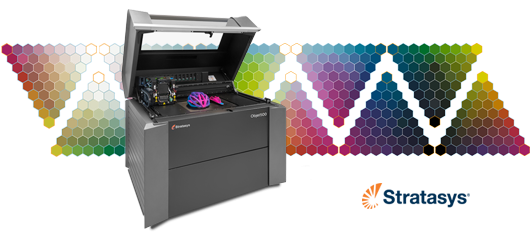
An example of this technology sold today is the XYZprinting Da Vinci Color, and the Da Vinci Color Mini 3D printers. They offer full color 3D printing at affordable prices, and are the first accessible venture into full color 3D printable models.
XYZprinting Da Vinci Color
- Price: $2,995 — Available on Amazon here
- Build volume: 200 x 200 x 150 mm
- Color range: full color 3D printer
Undoubtedly one of the most interesting and innovative 3D printers of the last few years, the Da Vinci Color is the only full color 3D printer around that isn’t an industrial machines costing tens of thousands of dollars.
The full color 3D printing is possible as it combines standard FDM 3D printing — using a colorless PLA filament — with inkjet CMYK ink cartridges that dyes and colors the filament as it is printed. This results in detailed, full color 3D prints, with even small details captured in the correct color. This has massive advantages for communicating prototypes or designs to upper management in full color, and is also great as a 3D printer for miniatures, in the video game design, art direction, and character creation industries for films and animation.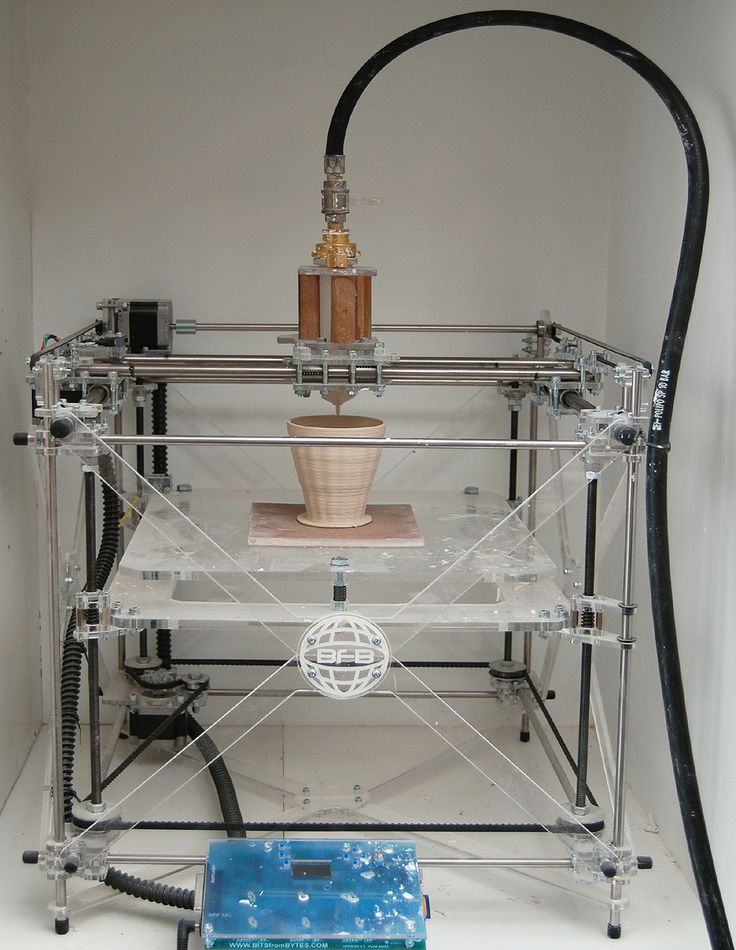 The only full color 3D printer available at an accessible price.
The only full color 3D printer available at an accessible price.
Despite being an FDM 3D printer, the Da Vinci Color uses the same inkjet cartridges as standard 2D printers, with each cartridge being able to be individually removed and replaced in the same way, and using the CMYK color system. It prints at up to 100-micron accuracy, and features a 5-inch touchscreen for simple navigation. The Da Vinci full color 3D printer can also auto-calibrate, and can be printed via both USB and over WiFi.
Overall, it’s the only way to get full-color 3D printing on an FDM 3D printer, with other full-color 3D printing options restricted to extremely expensive technologies like PolyJet and Multi Jet Fusion. Even if the colors can look washed out, it’s a tremendous achievement to even succeed in offering full-color 3D prints on an FDM machine for under $3,000.
A Da Vinci Color is also available, with a smaller print area. It costs $1,600 and can be purchased here.Full color 3D prints created on the Da Vinci Color by XYZprinting.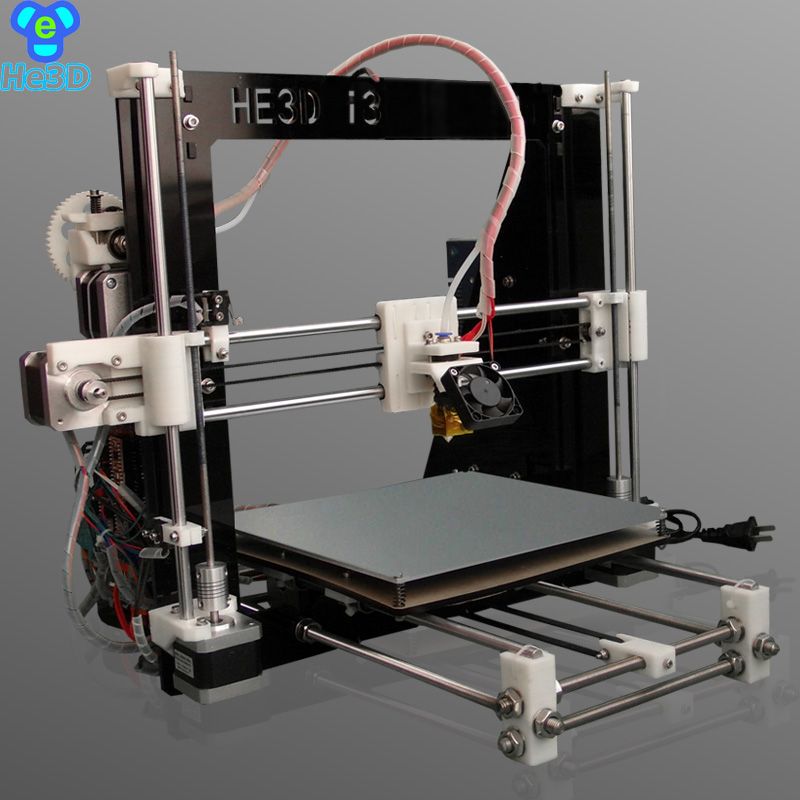
Industrial Color 3D Printing Technologies
Binder Jetting
Also known as ColorJet 3D printing, Binder Jetting 3D printers were first released by ZCorp, which was later acquired by 3D Systems. Binder Jetting 3D printers are now sold under 3D Systems’ ColorJet range.
Binder Jetting involves depositing a layer of powder, and then selectively depositing a binding agent which solidifies the layer. The binder is colored with ink during this process, allowing for full color 3D prints across the entire CMYK color palette range. The process also uses no supports, so color 3D prints come out with no markings from where supports have been removed.
PolyJet / Material Jetting
PolyJet 3D printing was first patented by Objet back in 1999, and more recently merged with Stratasys in a multi-billion-dollar deal, with Stratasys the surviving company. It is the most similar color 3D printing process to traditional 2D inkjet printing, with thousands of tiny photopolymer droplets deposited onto the build tray that can be colored any color, before being cured by a UV light.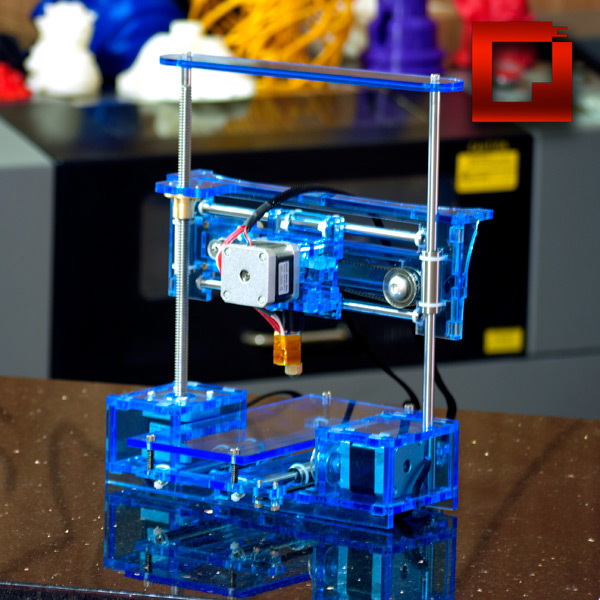
Not only can a full range of colors be used in PolyJet, but also a wide range of different materials within a single model. This offers vast and wide customization for rapid prototyping and low-volume part production.
Laminated Object Manufacturing / Selective Deposition Lamination
A less-known 3D printing technology, LOM / SDL 3D printing involves printing and cutting up standard A4 sheets of paper according to the model’s dimensions, and binding each layer together.
Full color 3D printing can be obtained by spraying each layer with the desired color, as is shown by MCor (now known as CleanGreen3D) 3D printers. Full color, durable paper parts can be printed, and do not require supports, with finished parts easily removable from the unused paper which is die-cut during the 3D printing process.
Multi Jet Fusion
Developed and commercialized by American tech giant HP, Multi Jet Fusion is somewhat similar to Binder Jetting in that it uses fusing agent on a powder bed. This fusing agent is deposited on the areas of the part that are to be solidified. The individual areas of the part can also be colored during the process, leading to full color 3D printed parts.
This fusing agent is deposited on the areas of the part that are to be solidified. The individual areas of the part can also be colored during the process, leading to full color 3D printed parts.
Conclusion
The future of color 3D printing looks very hopeful, with adaptors like the Palette making 3D printing in color far more accessible to hobbyists on an average salary.
With patents for some more industrial 3D printing technologies expiring in the near future, there is also reason to be excited for entrepreneurs looking to make low-cost 3D printer versions of existing technologies.
This has already happened for SLA 3D printers (in the form of low cost LCD 3D printers) as well as FDM — and to a lesser extent, SLS 3D printers — so we look forward to seeing if accessible PolyJet 3D printers start appearing in the next few years.
Top 20 Inexpensive 3D Printers ($199 to $1000)
3DPrintStory Reviews Top 20 Inexpensive 3D Printers ($199 to $1000)
Just 10 years ago, a 3D printer cost over $100,000. Today, you can easily find a cheap 3D printer for under $200. This is amazing.
Today, you can easily find a cheap 3D printer for under $200. This is amazing.
Naturally, the lower the price, the more restrictions. Some of the printers on our list will not have a heated bed and the workspace will be small. Naturally, the quality of most of the models presented below cannot compete with more expensive counterparts.
But with a little patience and diligence, it is quite possible to achieve high-quality 3D printing on a printer that costs half the price of a flagship smartphone. And it's really cool!
Important note : All 3D printers in this top are supplied assembled by the manufacturer. If you have free time and want to spend less money, you can buy DIY kits and assemble the 3D printer yourself according to the instructions.
List of the best cheap 3D printers in the price range from $ 200 to $ 1000
| 3D Printer | Material Material | Working space (mm) | Price | 459 |
|---|---|---|---|
| Flashforge Finder | PLA | 140 x 140 x 140 | 499 |
XYZPRINING DA vinci jr.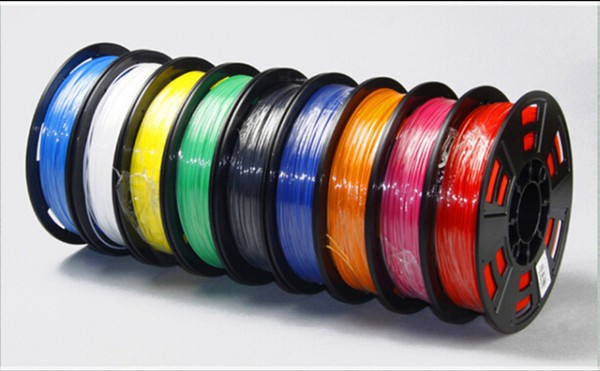 1.0 Pro 1.0 Pro | PLA | 150 x 150 x 150 | 499 |
| XYZprinting da Vinci Jr. Mix 2.0 | PLA | 150 x 150 x 150 | 599 |
| Printrbot Simple | |||
| Dremel Idea Builder | PLA | 230 x 150 x 140 | 899 |
| Printrbot Simple Pro | PLA | 200 x 150 x 200 | 999 |
| Prusa i3 MK2 | PLA, ABS, exotic | 250 x 210 x 20022 | |
In the article we are considering unfinished, but high -quality 3D printers from AM etc.
If you want to buy them, even if you live in large cities such as Kiev, Moscow, St. Petersburg, Minsk, it may turn out that these models will not be in the online stores of your city, or they may be with a decent mark-up relative to the cost that indicated in the article.

Since most of them are European / American, it is possible that they will not be in stores at all.
Therefore, before making a choice, I recommend looking directly at eBay, Amazon, Aliexpress, etc. - many sellers on these planforms deliver to the CIS countries within 1-4 weeks on average.
It is especially worth monitoring these platforms during the discount period - Black Friday or Chinese New Year (Aliexpress or Gearbest) - prices on such days can be 2 or more times lower than usual and it is worth waiting for a few weeks.
Monoprice MP Select Mini ($199)
Probably the best 3D printer on our list. Why? Because the Monoprice MP Select Mini is an impressive development with a thoughtful, compact design at a very low price. This model has a quick-change steel material feed wheel, a cooler for cooling the nozzle, a color LCD screen, a heated table, plus the ability to transfer models for 3D printing via microSD or USB.
The heated bed and wide temperature range of the extruder are especially pleasing, because for such a small price you get the opportunity to print in different materials: from ABS B to PLA or exotic materials like conductive PLA plastic, wood, metal-based composites and PVA.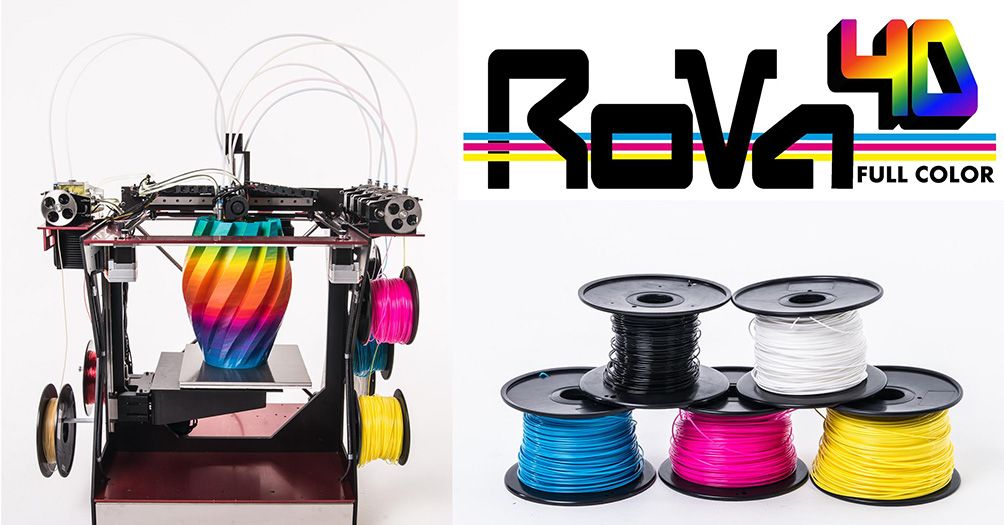
For those who are worried about the lack of a guarantee - for such a price it is possible without it. This model is upgradeable. For example, you can install a new nozzle, change the table and add WiFi connectivity.
Small working space - 120 x 120 x 120 mm. Over time, this will definitely not be enough for you.
Specifications of cheap 3D printer Monoprice MP Select Mini
- Printer type: FDM;
- 3D printing materials: ABS, PLA, exotic;
- Working space: 120 x 120 x 120 mm;
- Minimum layer height: 100 microns;
- Number of extruders: 1;
- 3D printing speed: 55 mm/s;
- Compatible with materials from other manufacturers: yes;
- Heated table: yes;
- Nozzle diameter: 1.75 mm;
- Control panel on 3D printer: yes;
- Connection: SD card, USB.
Back to the list of 3D printers
M3D Micro Retail ($249)
The M3D Micro 3D printer hit the market thanks to Kickstarter. This model was presented with an incredible price of $349.
This model was presented with an incredible price of $349.
The working space of the M3D Micro is 109 x 113 x 166 mm. There are several body color options. The company has implemented "Micro Motion Technology" - a set of innovative solutions - thanks to which you get excellent quality 3D printing at a small price.
Today, this inexpensive 3D printer already costs even less than the price announced on Kickstarter. You can buy it for $249 with a 12 month warranty. By the way, it is already possible to pre-order the next "pro" version.
Specifications of cheap 3D printer M3D Micro Retail
- Printer type: FDM;
- 3D printing materials: PLA;
- Working space: 116 x 109 x 113 mm;
- Minimum layer height: 50 microns;
- Maximum layer height: 350 microns;
- Number of extruders: 1;
- XY accuracy: 15 microns;
- Open Source: no;
- 3D printing speed: 55 mm/s;
- Compatible with materials from other manufacturers: yes;
- Heated table: yes;
- Nozzle diameter: 1.
 75 mm;
75 mm; - Control panel on 3D printer: no;
- Connection: USB.
Back to 3D printer list
XYZprinting da Vinci Mini ($289)
Da Vinci Mini is a successful attempt to make the 3D printer user-friendly. This model has only one button and 5 multi-colored indicators that reflect the current status of 3D printing. In addition, this affordable 3D printer is WiFi capable so you can control it over a network in your home, office or lab.
Unfortunately, you can only use the manufacturer's own 3D materials. On average, they cost 20% more than usual. However, the company also argues that the materials used (PLA) will be 100% non-toxic.
Specifications of cheap 3D printer XYZprinting da Vinci Mini
- Printer type: FDM;
- 3D printing materials: PLA;
- Working space: 150 x 150 x 150 mm;
- Minimum layer height: 100 microns;
- Number of extruders: 1;
- Open Source: no;
- Compatible with materials from other manufacturers: no;
- Heated table: no;
- Nozzle diameter: 1.
 75 mm;
75 mm; - Control panel on 3D printer: yes;
- Connection: USB, WiFi.
Back to 3D printer list
Monoprice Maker Select V2($299)
The next cheap 3D printer with a good reputation is the Monoprice Maker Select V2.
This model is an analogue of the Wanhao Duplicator i3, which, in turn, borrowed the design from the Prusa i3. But this does not affect the quality, as the Monoprice Maker Select V2 is easy to use and gives excellent 3D printing results.
Monoprice Maker Select V2 design feature is that the power supply and control panel are placed outside the 3D printer. The working space of this model is 200 x 200 x 180 mm. And this is really a good indicator for the money.
Specifications of cheap 3D printer Monoprice Maker Select V2
- Printer type: FDM;
- 3D printing materials: ABS, PLA, exotic;
- Working space: 200 x 200 x 180 mm;
- Minimum layer height: 100 microns;
- Number of extruders: 1;
- Open Source: software;
- Compatible with materials from other manufacturers: yes;
- Heated table: yes;
- Nozzle diameter: 1.
 75 mm;
75 mm; - Control panel on 3D printer: yes;
- Connection: USB, SD card.
Back to the list of 3D printers
New Matter MOD-t ($299)
New Matter is a young startup that offers a 3D printer MOD-t - An interesting design with a minimalistic design. This cheap 3D printer is WiFi enabled so you can manage print settings and print from your computer, tablet or smartphone. The working space is 150 x 150 x 125 mm. Thanks to the case, the noise during its operation is reduced. But the most interesting and attractive thing about MOD-t is the price. Only $299. In general, this is an interesting, high-quality model.
Specifications of cheap 3D printer New Matter MOD-t
- Printer type: FDM;
- 3D printing materials: PLA;
- Working space: 150 x 100 x 125 mm;
- Minimum layer height: 100 microns;
- Number of extruders: 1;
- Open Source: no;
- Compatible with materials from other manufacturers: yes;
- Heated table: no;
- Nozzle diameter: 1.
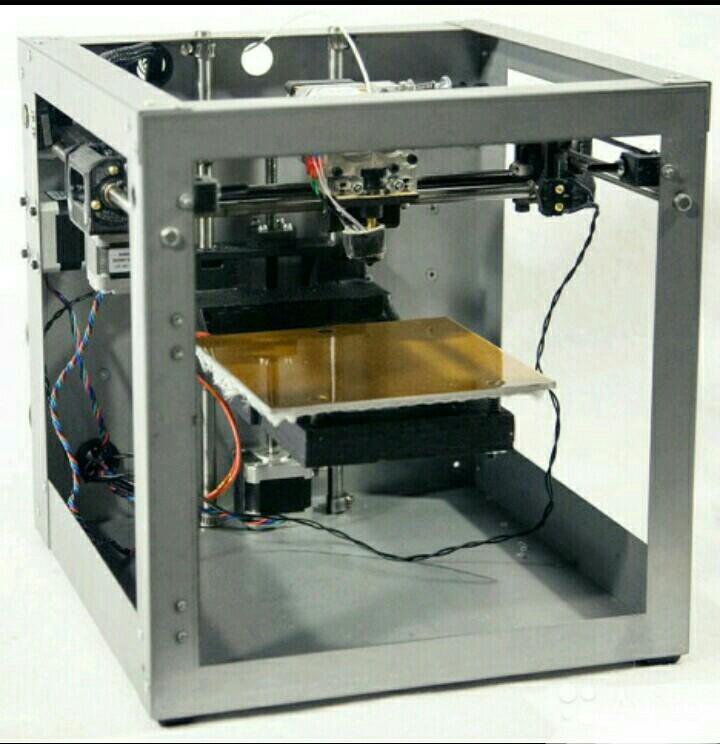 75 mm;
75 mm; - Control panel on 3D printer: no;
- Connection: USB, WiFi.
Back to the list of 3D printers
Printrbot Play ($399)
The Printbot Play is a very popular budget 3D printer that is often used in education. This inexpensive, reliable model, which is almost entirely made of metal.
The working space is 100 x 100 x 130 mm. Printbot Play has an extruder manufactured by the company itself - Alu Extruder v2. The body is made of powder coated steel and aluminium. SD slot provided.
You can upgrade the basic design of the Printrbot Play with a heated stand or increase the Y-axis stroke.

Back to 3D Printer List
Wanhao Duplicator i3 Plus ($459)
The Wanhao Duplicator i3 Plus is an upgraded version of the popular Wanhao Duplicator i3 (which in turn is based on the Prusa i3).
The main features of this cheap 3D printer are a large working space of 200 x 200 x 180 mm, a steel frame, electronics integrated into the design itself (previously it was taken out separately), a slot for a full-size SD card and a touchscreen display for control.
Wanhao Duplicator i3 Plus Cheap 3D Printer Specifications
- Printer type: FDM;
- 3D printing materials: ABS, PLA, exotic;
- Working space: 200 x 200 x 180 mm;
- Minimum layer height: 100 microns;
- Number of extruders: 1;
- Open Source: design and software;
- Compatible with materials from other manufacturers: yes;
- Heated table: yes;
- Nozzle diameter: 1.75 mm;
- Control panel on 3D printer: yes;
- Connection: USB, SD card.

Back to the list of 3D printers
Flashforge Finder ($499)
FlashForge Finder is one of the newest 3D printers on our list. This affordable 3D printer offers an average working space of 140 x 140 x 140mm.
This Finder features a transparent sidewall design so you can view the 3D printing process from any angle. A color display is installed, it is possible to transfer data via WiFi network. The printer comes with some supplies and a USB flash drive, so you can start 3D printing almost immediately.
Specifications of cheap 3D printer FlashForge Finder
- Printer type: FDM;
- 3D printing materials: PLA;
- Working space: 140 x 140 x 140 mm;
- Minimum layer height: 100 microns;
- Number of extruders: 1;
- XY accuracy: 11 microns;
- Open Source: no;
- Compatible with materials from other manufacturers: yes;
- Heated table: no;
- Nozzle diameter: 1.
 75 mm;
75 mm; - Control panel on 3D printer: yes;
- Connection: USB, WiFi.
Back to 3D printer list
XYZprinting da Vinci Jr. 1.0 Pro ($499)
What's so special about the da Vinci Jr. 1.0 pro? This is a new model from XYZPrinting, which includes many advanced features, such as support for printing materials from other manufacturers and increased speed of 3D printing.
Also features an auto-calibration mechanism, a closed chamber with a unique cooling system, and a 0.3mm nozzle option for high-quality printing of fine model details. All in all, this is a great 3D printer with a lot of useful features and at a low price.
Specifications for cheap 3D printer da Vinci Jr. 1.0 Pro
- Printer type: FDM;
- 3D printing materials: PLA;
- Working space: 150 x 150 x 150 mm;
- Minimum layer height: 100 microns;
- Number of extruders: 1;
- Open Source: no;
- Compatible with materials from other manufacturers: yes;
- Heated table: no;
- Nozzle diameter: 1.
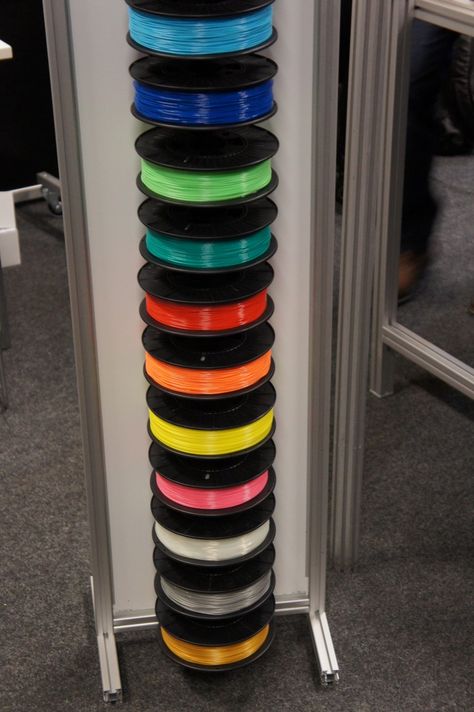 75 mm;
75 mm; - Control panel on 3D printer: yes;
- Connection: USB, SD card.
Back to 3D printer list
XYZprinting da Vinci Jr. Mix 2.0 ($599)
XYZprinting provides a wide range of low cost 3D printers. And paying attention to each model is quite difficult, although many of them are very interesting.
XYZprinting da Vinci Jr. Mix 2.0 stands out because it can print with two different materials and mix them to create multi-colored models. This dual-color 3D printing technology is rare in this price range ($500 to $1,000), so if you're interested in experimenting with multicolor printing, XYZprinting da Vinci Jr. Mix 2.0 is a great choice.
However, there is a drawback. This 3D printer is not compatible with materials from other manufacturers, so you will have to buy special materials from XYZprinting (as we mentioned above, they cost 20% more, but are not toxic).
Specifications of cheap 3D printer XYZprinting da Vinci Jr.
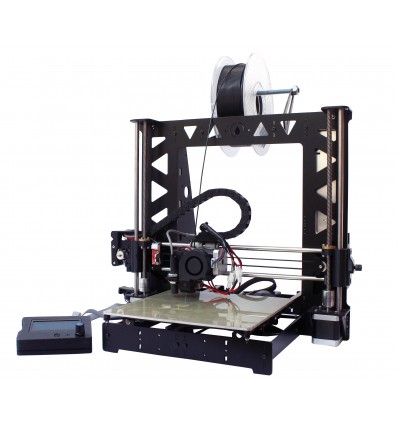 Mix 2.0
Mix 2.0 - Printer type: FDM;
- 3D printing materials: PLA;
- Working space: 150 x 150 x 150 mm;
- Minimum layer height: 200 microns;
- Number of extruders: 1;
- Open Source: no;
- Compatible with materials from other manufacturers: no;
- Heated table: no;
- Nozzle diameter: 1.75 mm;
- Control panel on 3D printer: yes;
- Connection: USB, SD card, WiFi.
Back to 3D printer list
Printrbot Simple ($599)
Printrbot Simple is the flagship of the Printbot empire. This model has a great open design with a solid aluminum frame and a working space of 150 x 150 x 150mm. This inexpensive 3D printer comes fully assembled at a very good price. As you need and want to experiment, you can add a heated table and expand the workspace in the horizontal plane.
Specifications of cheap 3D printer Printrbot Simple
- Printer type: FDM;
- 3D printing materials: PLA;
- Working space: 150 x 150 x 150 mm;
- Minimum layer height: 100 microns;
- Number of extruders: 1;
- 3D printing speed: 80 mm/s;
- Open Source: design and software;
- Compatible with materials from other manufacturers: yes;
- Heated table: optional;
- Nozzle diameter: 1.
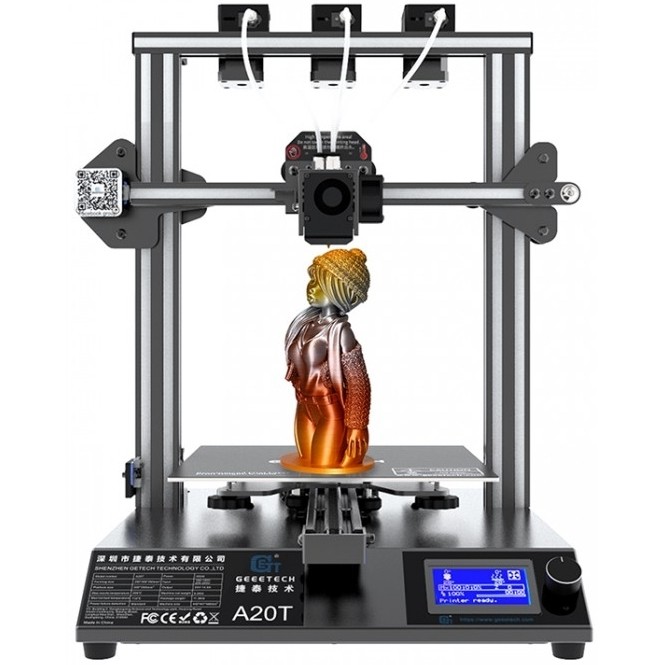 75 mm;
75 mm; - Control panel on 3D printer: no;
- Connection: USB.
Back to the list of 3D printers
UP mini 2 ($599)
The UP mini 2 is a low cost 3D printer that packs in impressive design and functionality. For starters, it has a touch screen panel and the ability to connect via WiFi.
But the most interesting is further. Implemented power failure protection system. 3D printing will continue after the emergency stop. Built-in HEPA air filtration system. Automatic detection of the height of the extruder nozzle. A separate, closed container for the material, thanks to which it does not deteriorate under the influence of moisture from the environment.
Great 3D printer for a small price. The only thing that upsets me a little is the small working space - 120 x 120 x 120 mm.
Specifications of cheap UP mini 2 3D printer
- Printer type: FDM;
- 3D printing materials: PLA, ABS;
- Working space: 120 x 120 x 120 mm;
- Minimum layer height: 150 microns;
- Maximum layer height: 350 microns;
- Number of extruders: 1;
- Open source: no;
- Compatible with materials from other manufacturers: yes;
- Heated table: yes;
- Nozzle diameter: 1.
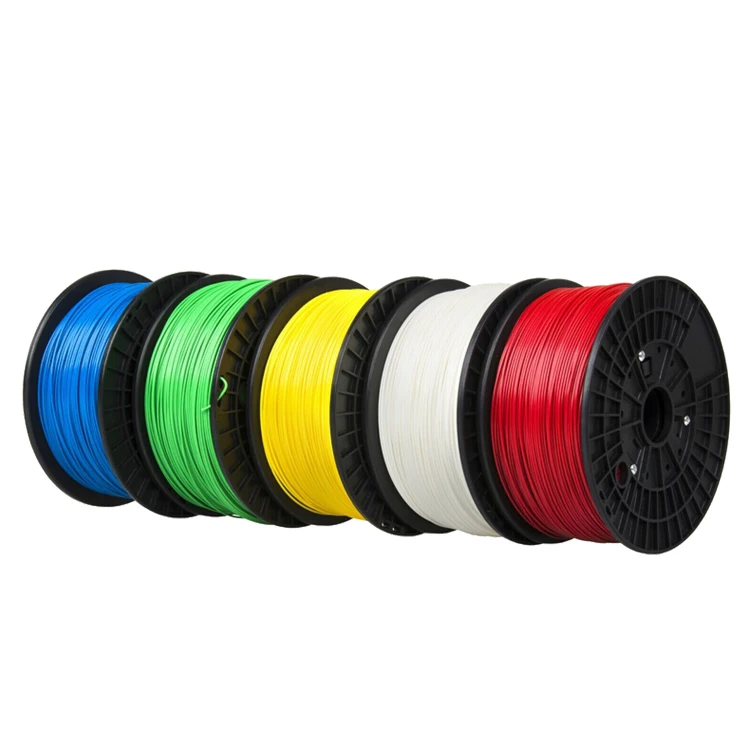 75 mm;
75 mm; - Control panel on 3D printer: yes;
- Connection: USB, WiFi.
Back to 3D Printer List
Monoprice Maker Select Ultimate ($699)
The Monoprice Maker Select Ultimate is an extraordinary beast that combines elements from two leaders in the world of 3D printing - Zortax and Ultimaker. The Monoprice Maker has an aluminum perforated printing table, which was offered in the Zortax M200 (thanks to this table, the grip of the base of the model with the table is much better), and the software part is almost identical to Ultimaker 2 (very user-friendly interface and functionality).
This model uses a "Bowden extruder", i.e. the feed units and nozzle are separated, unlike the direct feed. This improves reliability and reduces the likelihood of 3D printing errors (although, most likely, it was necessary to sacrifice printing speed, as the weight of the printing unit increases). Given the cost, this is a good model, the analogues of which are much more expensive.
Specifications of cheap UP mini 2 3D printer
- Printer type: FDM;
- 3D printing materials: PLA, ABS, exotic;
- Working space: 200 x 200 x 175 mm;
- Minimum layer height: 20 microns;
- Number of extruders: 1;
- Open Source: no;
- Compatible with materials from other manufacturers: yes;
- Heated table: yes;
- Nozzle diameter: 1.75 mm;
- Control panel on 3D printer: yes;
- Connection: USB, SD card.
Back to the list of 3D printers
Robo C2 ($799)
The Robo C2 is a small 3D printer with tons of connectivity options. Using a specialized application, you can monitor the status of 3D printing from your smartphone or tablet. It can be connected to a Chromebook. Thanks to the built-in slicing program, you do not need to install additional printing software.
Probably the most impressive is the integration with Amazon Alexa. Users can stop, cancel and check the status of 3D printing in real time using voice commands.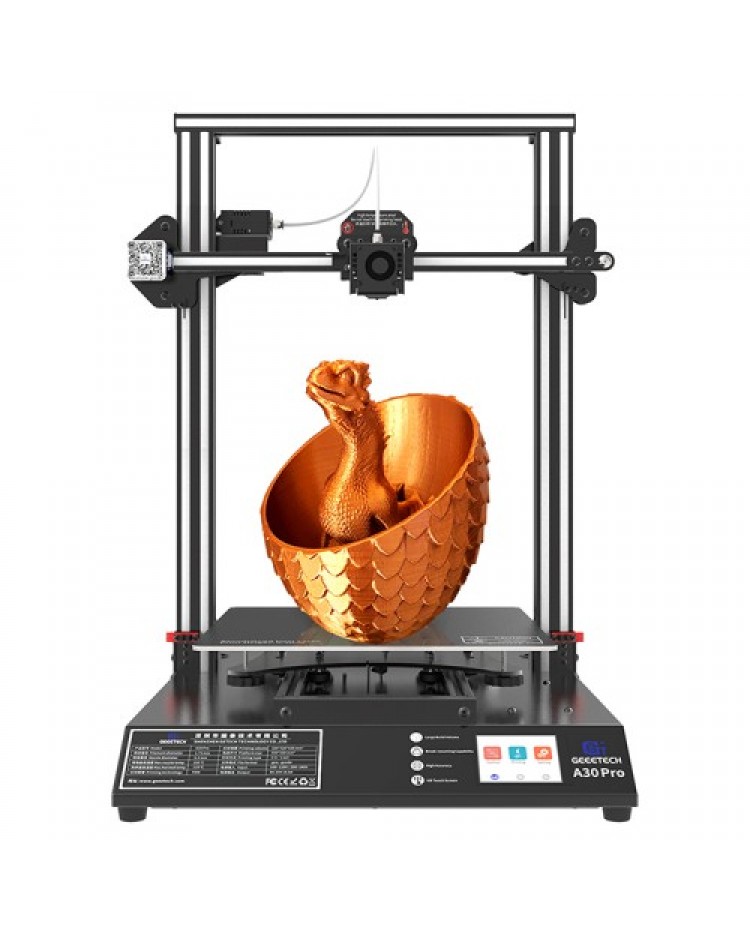
What does this inexpensive 3D printer offer? Working space 127 x 127 x 150 mm. The 3D printing speed is 300 mm/s and the resolution is 20 microns. There is a built-in 3.5'' color touch screen, a system for monitoring the amount of remaining material for printing, automatic calibration and a removable self-aligning print platform. The only drawback is that the table is not heated, so you have to use PLA plastic.
Specifications of cheap 3D printer Robo C2
- Printer type: FDM;
- 3D printing materials: PLA;
- Working space: 127 x 127 x 150 mm;
- Minimum layer height: 20 microns;
- Number of extruders: 1;
- Open Source: software;
- Compatible with materials from other manufacturers: yes;
- Heated table: no;
- Nozzle diameter: 1.75 mm;
- Control panel on 3D printer: yes;
- Connection: USB, WiFi.
Back to the list of 3D printers
Wanhao Duplicator 4S ($829)
The Duplicator 4S has 2 extruders.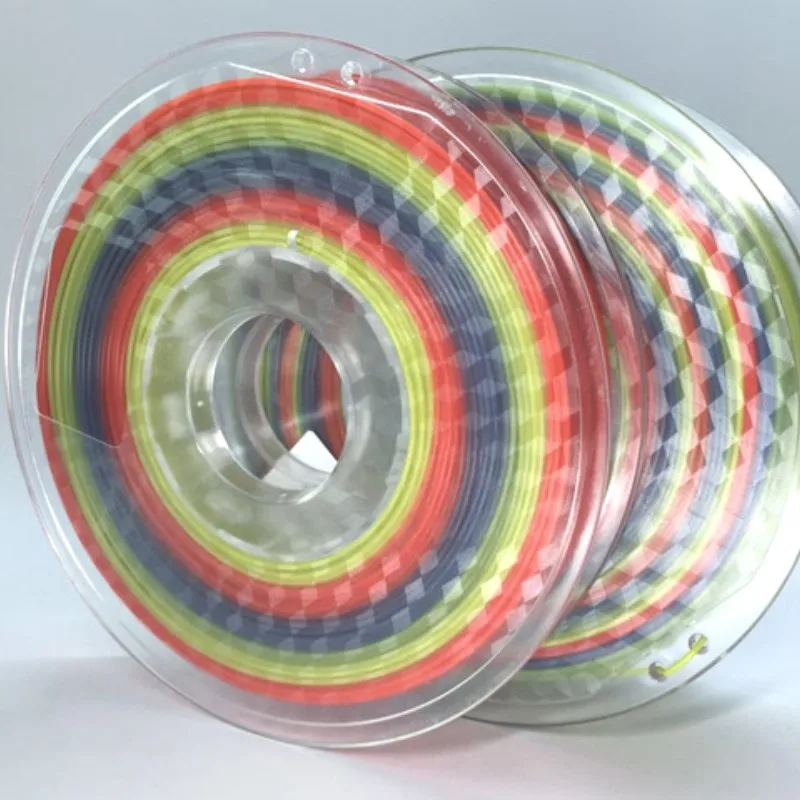 It's essentially a copy of the MakerBot Replicator. Behind the steel body is the MK10 material feed mechanism, which is currently the easiest to use and most sought after in the market for 3D printer components.
It's essentially a copy of the MakerBot Replicator. Behind the steel body is the MK10 material feed mechanism, which is currently the easiest to use and most sought after in the market for 3D printer components.
One of the features of this model is a high-precision material feed wheel, which ensures the same filament feed speed. The Duplicator 4S is equipped with a 0.4mm precision nozzle.
Specifications of cheap 3D printer Duplicator 4S
- Printer type: FDM;
- 3D printing materials: ABS, PLA, exotic;
- Working space: 225 x 145 x 150 mm;
- Minimum layer height: 100 microns;
- Maximum layer height: 500 microns;
- Number of extruders: 2;
- XY accuracy: 11 microns;
- 3D printing speed: 40 mm/s;
- Open Source: software;
- Compatible with materials from other manufacturers: yes;
- Heated table: yes;
- Nozzle diameter: 0.4 mm;
- Control panel on 3D printer: yes;
- Connection: USB, SD card.

Back to the list of 3D printers
Polar 3D Printer ($899)
Polar 3D belongs to a separate category of 3D printers in this top, since this model implements the polar coordinate system. This causes the table to rotate and the print head to move up, down, right, and left.
Thanks to the polar coordinate system, this 3D printer is powered by two stepper motors, so it consumes less power. In addition, it turned out to realize a larger size of the working area: 203 (table diameter) x 152 (Z coordinate) mm.
Nominal price $899, but there are special discounts for educational institutions. The discounted price is only $599.
Specifications of cheap 3D printer Polar 3D
- Printer type: FDM;
- Materials for 3D printing: PLA;
- Working space: 203 (table diameter) x 152 (Z-coordinate) mm;
- Minimum layer height: 50 microns;
- Maximum layer height: 400 microns;
- Number of extruders: 1;
- 3D printing speed: 40 mm/s;
- Open Source: no;
- Compatible with materials from other manufacturers: yes;
- Heated table: no;
- Nozzle diameter: 1.
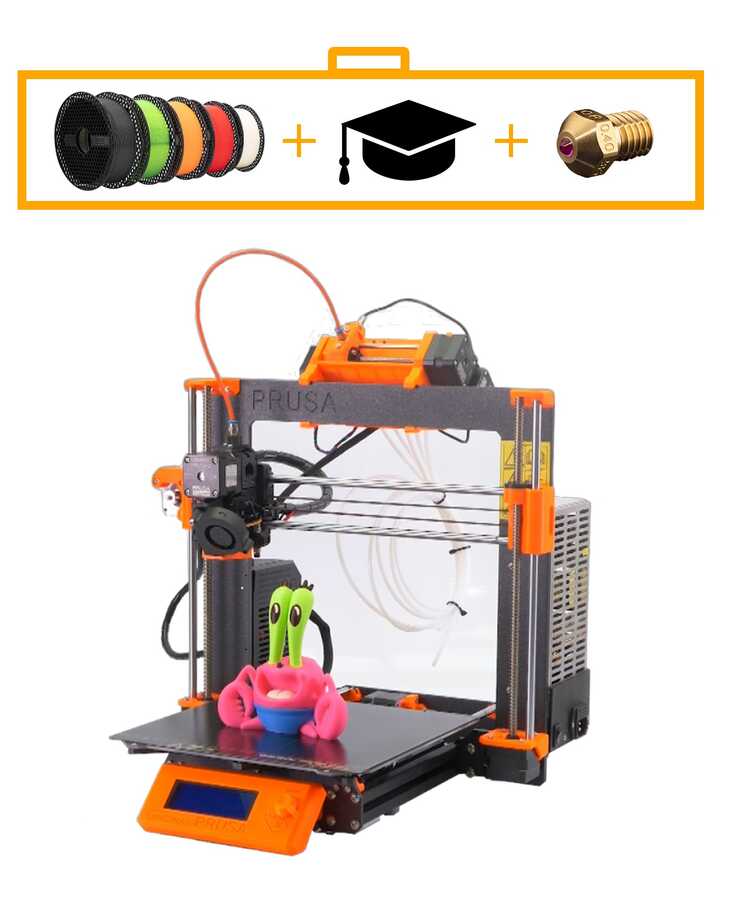 75 mm;
75 mm; - Control panel on 3D printer: no;
- Connection: USB, WiFi, SD card.
Back to 3D printer list
FlashForge Creator Pro ($899)
You've probably heard of this 3D printer. FlashForge Creator Pro is very similar to Makerbot Replicator 2X. This inexpensive 3D printer has 2 extruders, it has a steel closed body.
Other features include a table sizing system, and a guide screw that makes the guide system more stable and durable. The design is nothing special, but this model has earned positive reviews from the 3D community due to its reliability, versatility and ease of use.
Specifications of cheap 3D printer FlashForge Creator Pro
- Printer type: FDM;
- 3D printing materials: ABS, PLA, exotic;
- Working space: 225 x 145 x 150 mm;
- Minimum layer height: 100 microns;
- Maximum layer height: 500 microns;
- Number of extruders: 2;
- XY accuracy: 11 microns;
- 3D printing speed: 40-100 mm/s;
- Open Source: design and software;
- Compatible with materials from other manufacturers: yes;
- Heated table: yes;
- Nozzle diameter: 1.
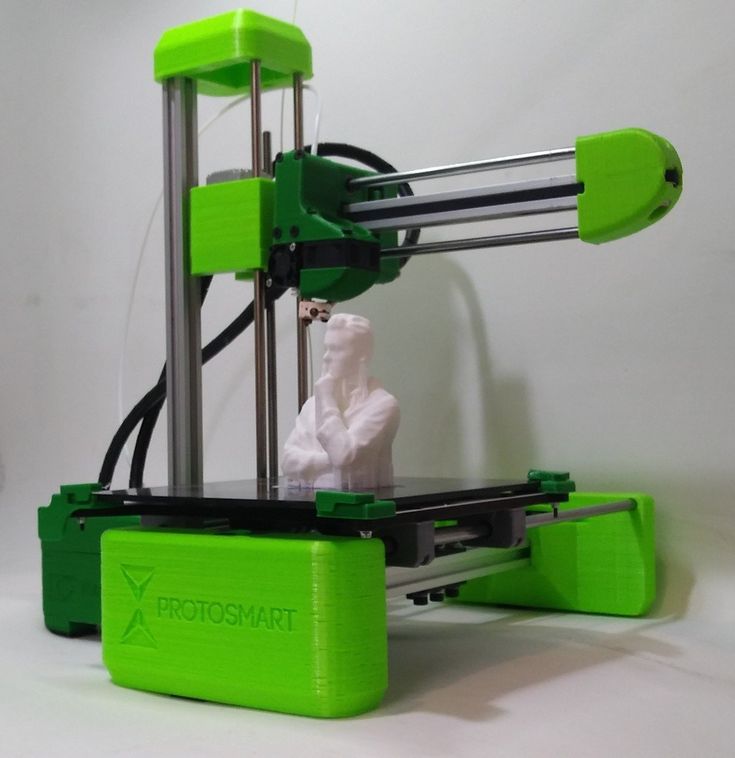 75 mm;
75 mm; - Control panel on 3D printer: yes;
- Connection: USB, SD card.
Back to 3D Printer List
Dremel Idea Builder ($899)
The Idea Builder is plug and play. This 3D printer is designed by Dremel. It has a color touch screen display. Sufficiently large working space - 230 x 150 x 140 mm. Unfortunately, the table is not heated. On the other hand, since only PLA plastics can be used, this model is great for classrooms and teaching labs.
Specifications of cheap 3D printer Dremel Idea Builder
- Printer type: FDM;
- 3D printing materials: PLA;
- Working space: 230 x 150 x 140 mm;
- Minimum layer height: 100 microns;
- Number of extruders: 1;
- Open Source: no;
- Compatible with materials from other manufacturers: no;
- Heated table: no;
- Nozzle diameter: 1.75 mm;
- Control panel on 3D printer: yes;
- Connection: USB, SD card.
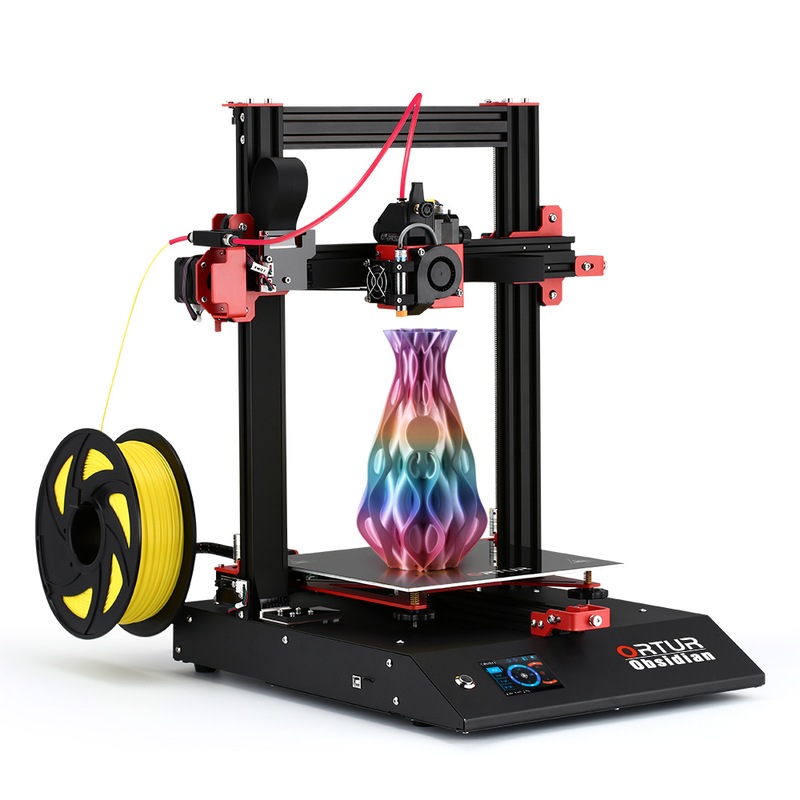
Back to the list of 3D printers
Printrbot Simple Pro ($999)
Printrbot Simple Pro is a significant upgrade from the original Simple. Same open design, no body. Like its predecessor, the Printrbot Simple Pro is compact and portable. All-metal construction for excellent vibration damping and shock resistance.
The main difference is the built-in color touch screen, the ability to connect via WiFi and free cloud service (optional), which greatly improves the 3D printing process. Simple Pro has a 32-bit processor, which ensures smooth and fast movements. And at the same time, this model is included in our top 20 cheap 3D printers, since its cost is $999.
Specifications of cheap 3D printer Printrbot Simple Pro
- Printer type: FDM;
- 3D printing materials: PLA;
- Working space: 200 x 150 x 200 mm;
- Minimum layer height: 50 microns;
- Number of extruders: 1;
- Open Source: design and software;
- Compatible with materials from other manufacturers: yes;
- Heated table: optional;
- Nozzle diameter: 1.
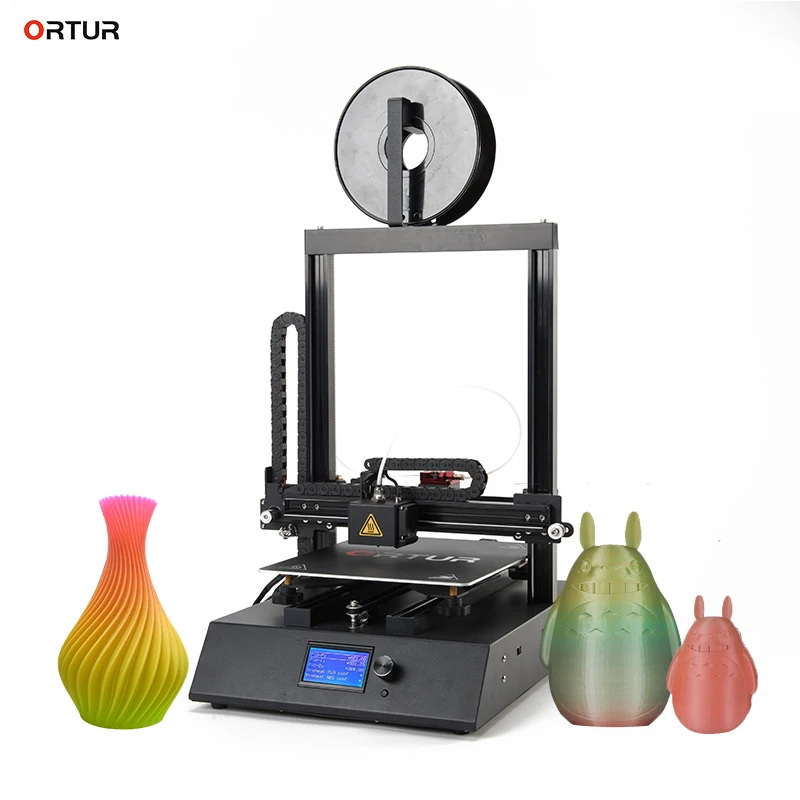 75 mm;
75 mm; - Control panel on 3D printer: yes;
- Connection: USB, WiFi.
Back to 3D printer list
Prusa i3 Mk2 ($999)
This is one of the best 3D printers you can buy in this price range. All nodes are open-source licensed and part of the Rep-Rap project, so there are many copies around ... but all replicas are worse than the original.
The Prusa i3 Mk2 is equipped with a heated table that has technology to compensate for temperature differences in the center and corners. There is an automatic calibration system. And of course, amazing documentation. This is an extremely versatile 3D printer that you will 100% appreciate when you start printing with unusual materials such as PLA, PET, HIPS, Flex PP or Ninjaflex, etc.
The Prusa i3 Mk2 is a 3D printer that is constantly being developed and supported by the manufacturer. Its developer Josef Prusa regularly adds new features, software and design improvements (for example, the ability to color 3D print). If you look for quality competitors in the 3D printing market, then the cost of their equipment will be in the region of $2000 - $3000.
If you look for quality competitors in the 3D printing market, then the cost of their equipment will be in the region of $2000 - $3000.
The only drawback is that if you decide to buy a Prusa i3 Mk2, you will have to wait about 2 months, as the company cannot keep up with the high demand.
Specifications of cheap 3D printer Prusa i3 Mk2
- Printer type: FDM;
- 3D printing materials: ABS, PLA, exotic;
- Working space: 250 x 210 x 200 mm;
- Minimum layer height: 100 microns;
- Number of extruders: 1;
- 3D printing speed: 50 mm/s;
- Open Source: design and software;
- Compatible with materials from other manufacturers: yes;
- Heated table: yes;
- Nozzle diameter: 1.75 mm;
- Control panel on 3D printer: yes;
- Connection: SD card.
The most expensive 3D printers in the world
- home
- News AT
- World
- The most expensive 3D printers in the world
Various technologies do not stand still, they are constantly evolving. This article proposes to consider the evolution of industrial 3D printers today, which are the most expensive in the world and why.
This article proposes to consider the evolution of industrial 3D printers today, which are the most expensive in the world and why.
3D printers are unique in terms of the variety of different 3D printing methods, materials used and their applications. You can spend as little as $100 to get a reliable 3D printer to make a huge variety of parts from affordable plastic material. On the other hand, you can spend over a million dollars to buy a 3D printer to 3D print parts with large and complex construction geometries. They can be used in the aerospace industry, the production of space satellites or miniature biocompatible devices for medical purposes. The most expensive 3D printers on the market today use 1 to 12 powerful lasers to fuse metal powder, sinter polymer materials, or polymerize resin, and 3D printing from a given 3D model occurs by applying the powder layer by layer, which is a process additive manufacturing.
It can be noted that the size of the 3D printer does not determine how expensive the 3D printer will be.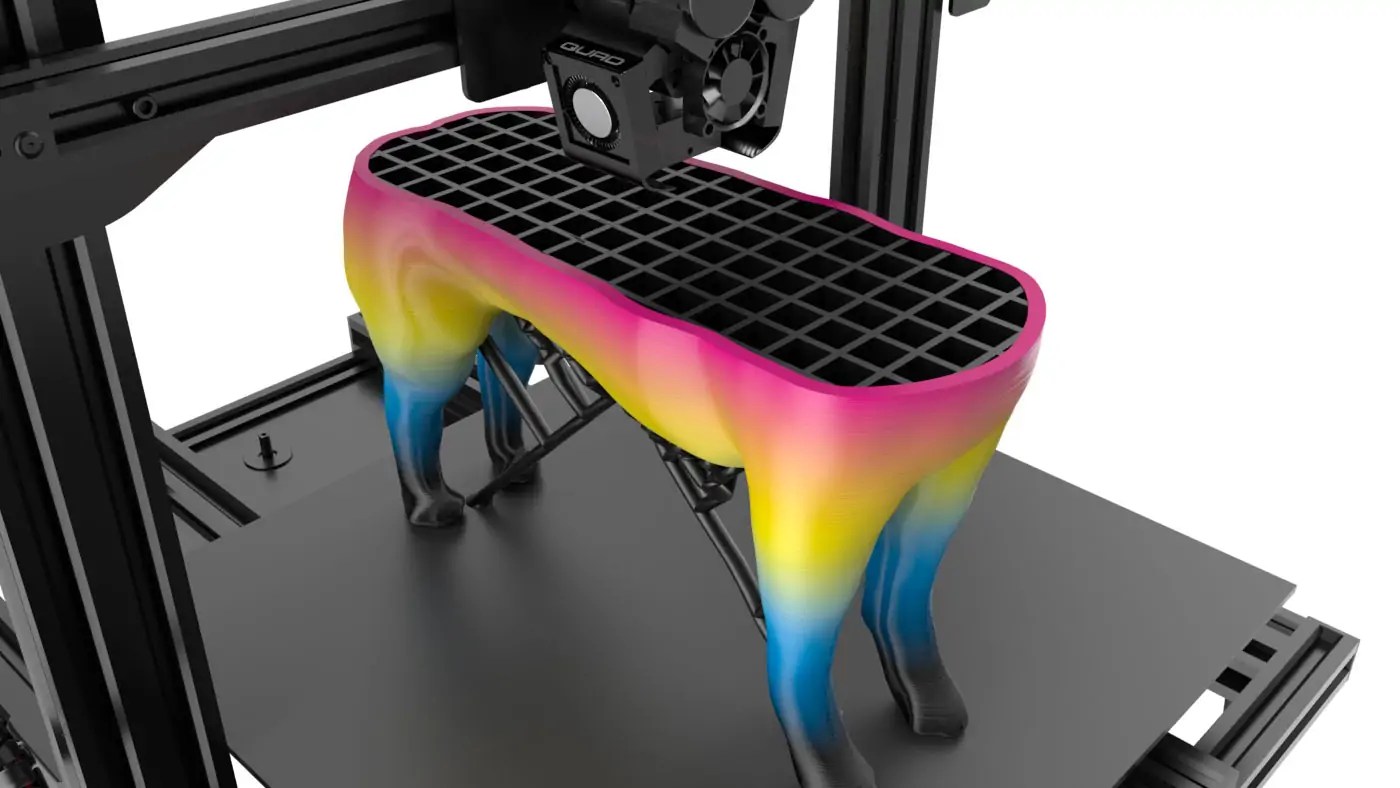 Today, the price often depends on advanced patented technologies and features that allow a 3D printer to produce fast and high-quality 3D-printed parts without requiring special technical knowledge from the operator.
Today, the price often depends on advanced patented technologies and features that allow a 3D printer to produce fast and high-quality 3D-printed parts without requiring special technical knowledge from the operator.
Some of the most expensive printers are not even for sale. Carbon 3D's 3D printers are available for rent only, which allows them to be used by many users. Others use their 3D printers on a project-by-project basis, such as the Vulcan construction printer from homebuilder Icon 3.
Stargate, the world's largest metal 3D printer built by Relativity Space to 3D print rockets, it's not for sale, but if it was, it would definitely make our list. Many of the most exciting technologies in 3D printing can only be used for custom 3D printing, not for purchase. (Source: Relativity Space)
Let's look at the criteria that affect the cost of a modern industrial 3D printer.
Features 3 D Printers affecting their price:
- The uniqueness of the technology when creating
- How automated the processes in 3D accuser
- Obloads allowing the quality of the quality
- allowing the quality of the quality of the quality software
- Numerous controls and adjustments
- Controlled environment inside the working chamber (use of inert gas, the possibility of heating/cooling the working platform)
Breaking down these features:
Features that drive price increases for 3D printers include printer technology-specific software, real-time 3D printing control systems, and anything that automates processes that sometimes are performed manually in cheaper systems (layer leveling, subsequent post-processing or powder sieving) or processes that require knowledge of metallurgy or polymers.
Production technology requiring a vacuum chamber in a 3D printer, filling the working chamber with an inert gas, or printers that are certified for use in clean rooms and having these characteristics are significantly reflected in the final price of this equipment.
The materials used in the 3D printing process also have a significant impact on the final cost of a 3D printer. Many 3D printers only work with proprietary materials that have been developed by the manufacturer for that 3D printer. They can be metal powder, special resins filled with carbon fiber particles, and unique polymer powders. At this point in time, it is possible to 3D print anything from pure gold to advanced engineering plastics on 3D printers, even in the harsh environment of space.
There are 3D printers that can 3D print multiple materials in one job, and there are multicolor 3D printers that are also in the higher price segment.
MOST EXPENSIVE 3 D -PRINTERS
The 3D printer manufacturers discussed below are reluctant to publish exact prices for their products. This is due not only to competition, but also to the fact that 3D printers have a basic package, as well as a package with additional options according to customer requirements. That said, with that in mind, below is a look at some of the most expensive 3D printers available today - all costing over half a million US dollars - and what they provide.
This is due not only to competition, but also to the fact that 3D printers have a basic package, as well as a package with additional options according to customer requirements. That said, with that in mind, below is a look at some of the most expensive 3D printers available today - all costing over half a million US dollars - and what they provide.
E-Plus3D EP-M450H
3D printer EP-M450H LPBF (Source: E-Plus 3D)
Chinese company E-PLUS3D produces industrial metal 3D printers with a large construction camera for additive manufacturing for various industries in the country. These 3D printers are used in the aerospace, automotive, electronics, and engineering industries to produce not only large-sized parts such as heavy-duty molds, but also mass-produced parts.
The EP-M450H Metal 3D Printer is the company's largest 3D printer with a build chamber of 456 x 456 x 1080 mm, producing 99.9% density metal parts from a wide range of materials at a speed of 55 cm³ per hour.
XJet Carmel 1400C
Israeli company XJet has developed a unique ceramic 3D printing technology. NanoParticle Jetting (NPJ) technology allows the production of metal and ceramic parts with a high level of detail, smooth surface roughness and geometric accuracy. The high cost of this 3D printer is not only due to the technology itself, patented materials that make this printer a serious investment, but also to the advanced automation of the 3D printer itself, which makes it easy to use.
Carmel 1400C, equipped with one of the largest 1400 cm² work platform in the industry, which allows you to simultaneously produce several ceramic parts.
SLM Solutions NXG Xll 600
NXG XII 600 Large Metal 3D Printer (Source: SLM Solutions) range of printers, but its NXG Xll 600 is what the company says is a revolution in industrial additive manufacturing. The NXG XII 600 was designed for high-volume additive manufacturing and features the industry's first 12 1,000W lasers with a 600x600x600 build chamber.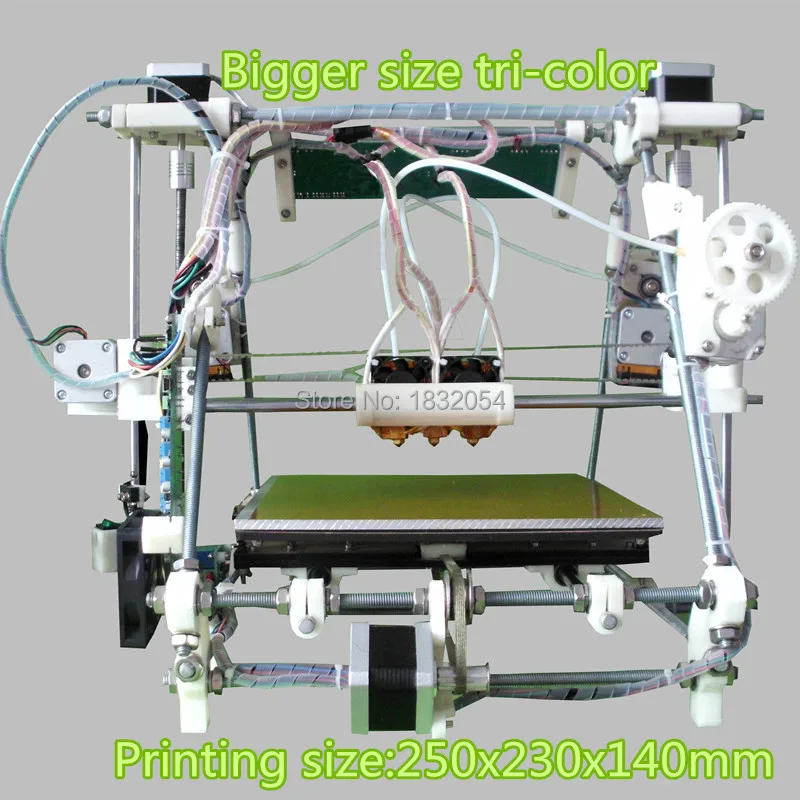 Lasers provide high build speed up to 1000 cm 3 /h and capacity not available on other machines.
Lasers provide high build speed up to 1000 cm 3 /h and capacity not available on other machines.
In addition to lasers, the NXG Xll 600 has all the benefits that SLM Solutions customers have been asking for over the years, including automatic start-up, laser focusing, closed powder feed and material screening, and other latest developments.
UpNano NanoOne Bio
The Austrian company UpNano has developed a two-photon 3D printer using hydrogel-based bio-ink, which allows direct printing of 3D structures containing living cells, both at the meso- and microscale. The NanoOne Bio printer is based on the NanoOne line of laser printers capable of creating structures of 12 orders. The new hydrogel is the only commercially available resin that allows live cells to be embedded directly from culture plates into 3D printed structures for biological applications.
UpNano claims that the combination of X Hydrobio INX U200 and NanoOne Bio opens up new possibilities in biomedical research and development, both in industry and academia, allowing pharmaceutical companies and research institutes to create cell models that mimic natural growth conditions in the body person.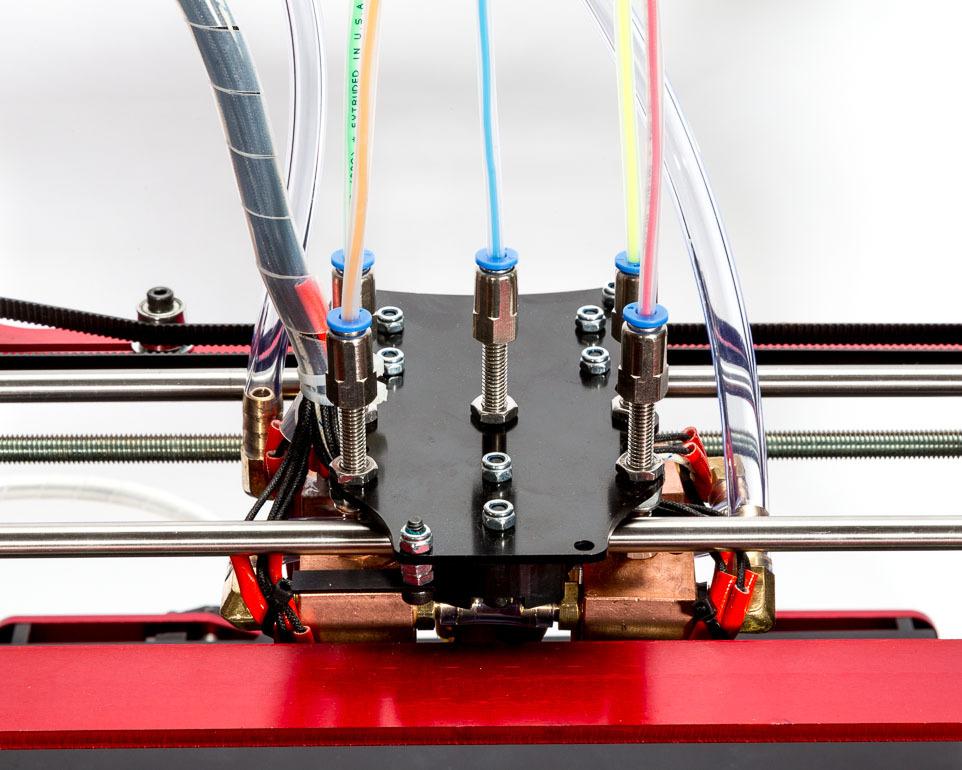
Black Buffalo 3D
Black Buffalo's new 1G construction printer (Source: Black Buffalo)
Black Buffalo 3D, an American company based in South Korea, officially unveiled its Nexcon 1G earlier this year, which is a 3D printer for building houses and other large concrete objects. The printer can create a 92.9 square meter structure in less than 20 hours. It uses Black Buffalo's patented cementitious material, the company calls it ink, that can be dyed to a chosen color and is also customizable to 3D print locally according to the temperature, humidity and altitude conditions of the area.
The Nexcon 1G is a modular 3D construction printer that can be extended along the X, Y and Z axes to scale up (or down) a project up to three stories high. The 1G printer is unique in that users can reposition the base rails and move the printer to a new printable area without having to remove the X or Z axis.
Optomec LENS 860
Energy Deposition (DED), which allows the recovery of large titanium components, such as those used in aircraft engines. Optomec offers several models of 3D printers that have large build chambers like 860x600x610 and laser power of 3 kW.
Optomec offers several models of 3D printers that have large build chambers like 860x600x610 and laser power of 3 kW.
The LENS 860 machining systems are ideal for the fabrication, repair or coating of medium to large metal parts.
ExOne S-Max Pro
While many ExOne printers (now owned by Desktop Metal) are still very affordable given that high volume 3D printers can cost quite a few zeros.
3D printers are used to 3D print complex and detailed sand molds and cores for foundries producing large metal parts for industrial use. The S-Max Pro features a 1,260 liter build chamber for fast 3D printing of sand molds and cores. A new automated print head enables fast 3D printing, while improved sand compaction ensures the density and strength of complex sand mold designs. As the most advanced system in the ExOne family of sand 3D printers, the S-Max Pro is focused on continuous 24/7 production and offers Industry 4.0 integration with cloud connectivity and real-time machine monitoring.





